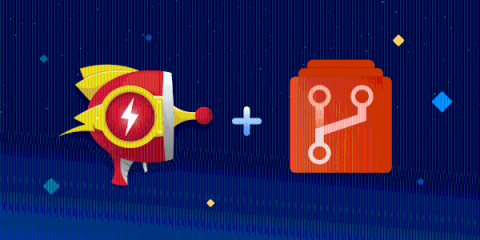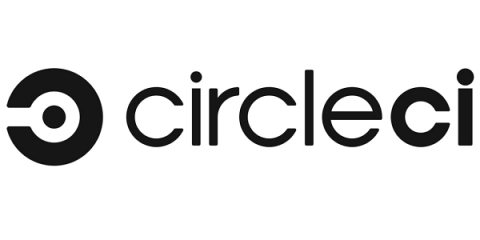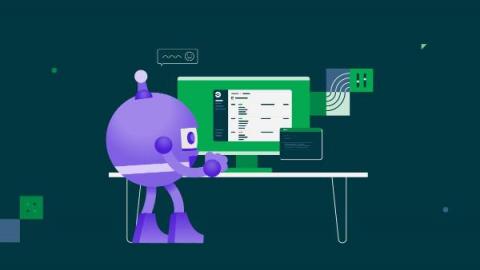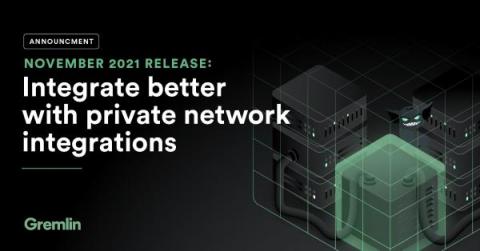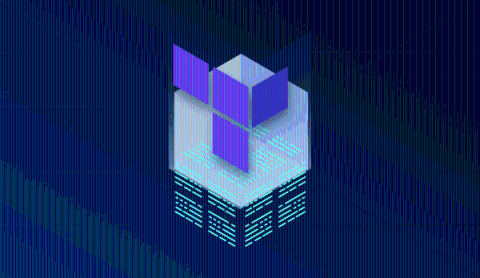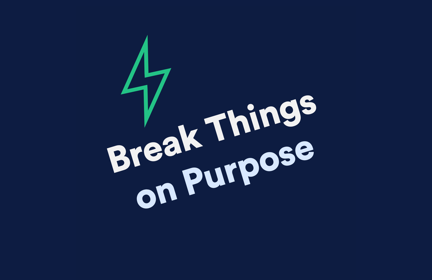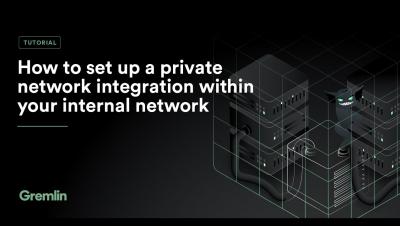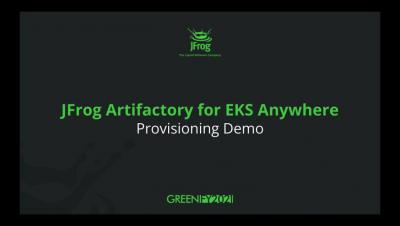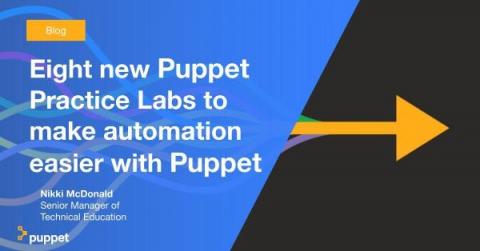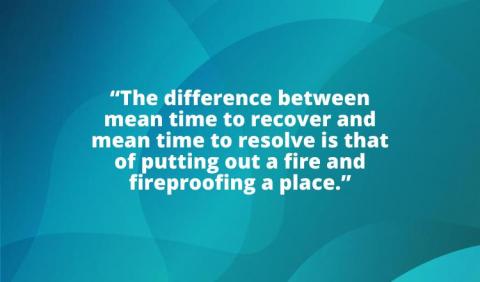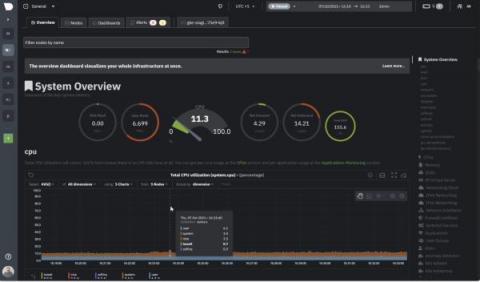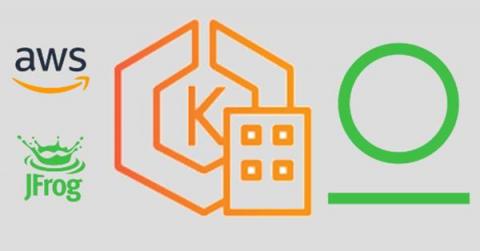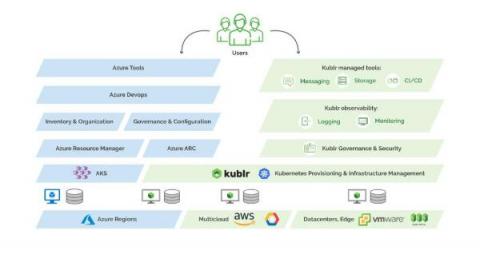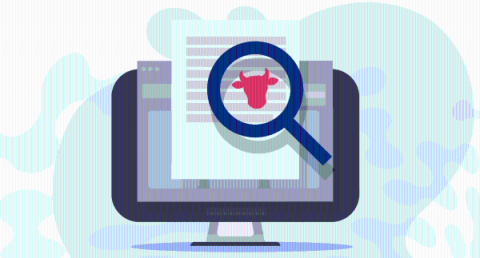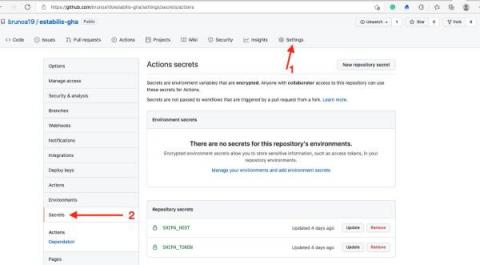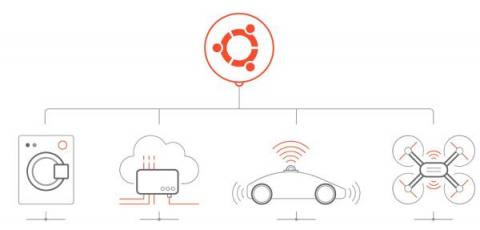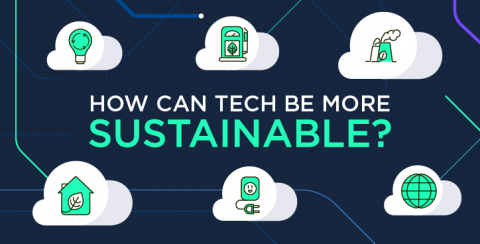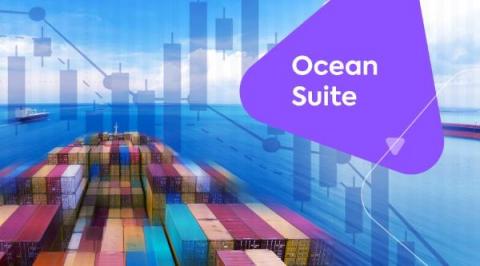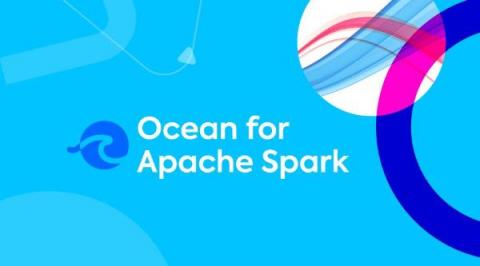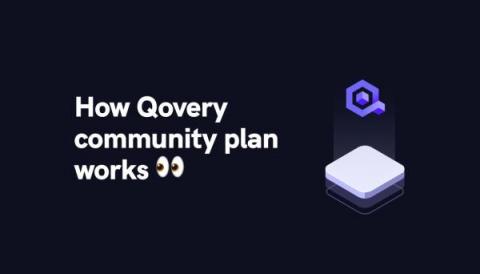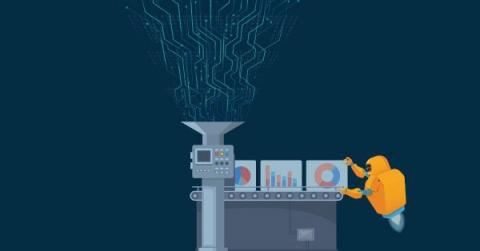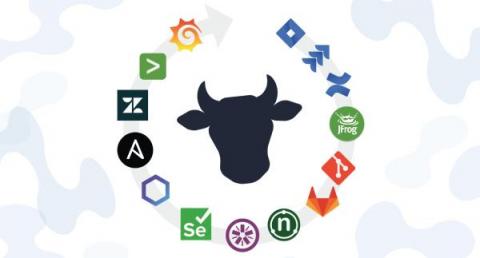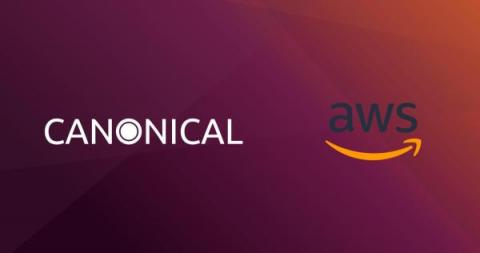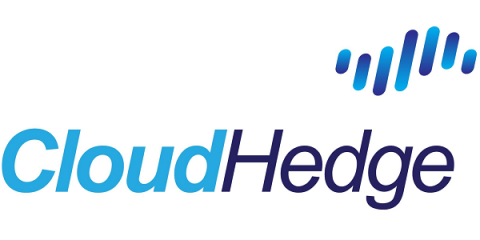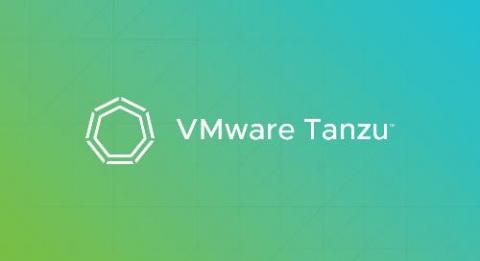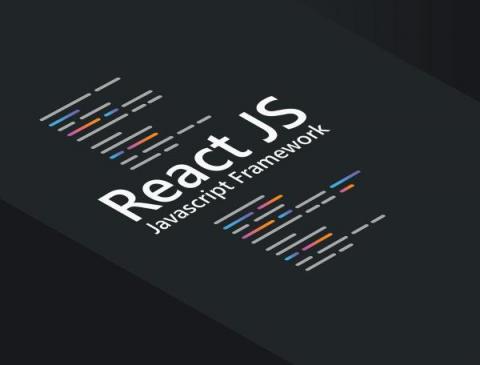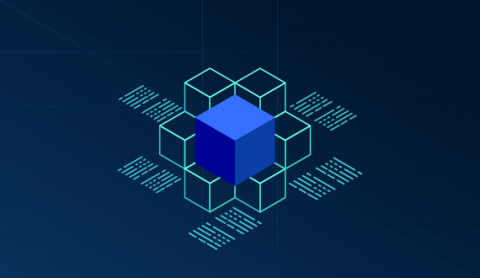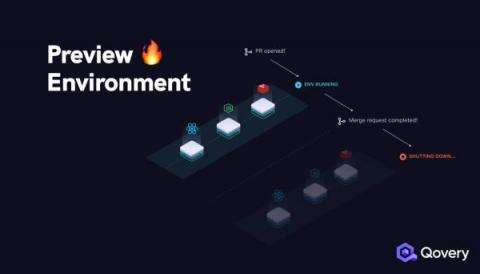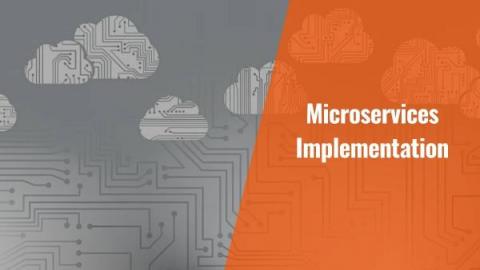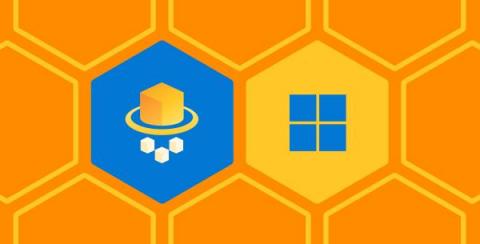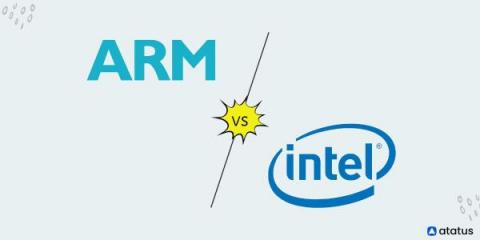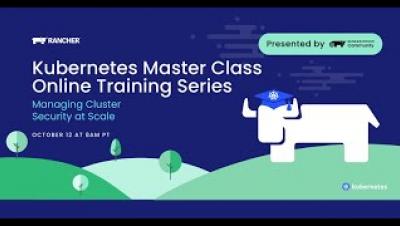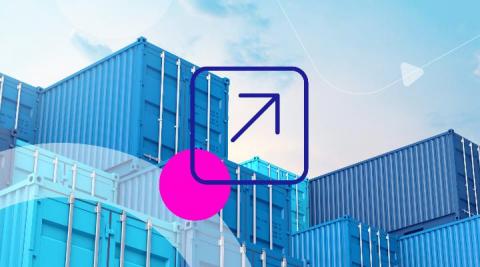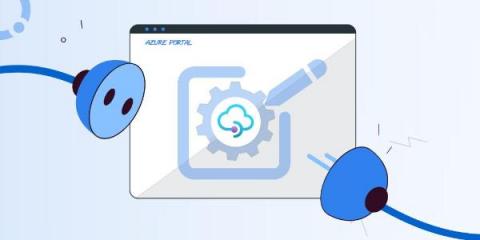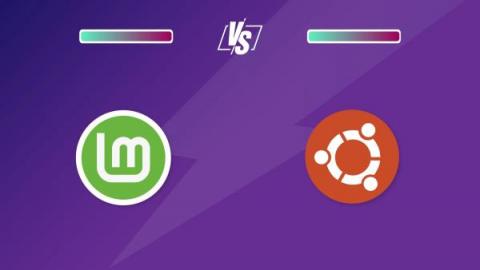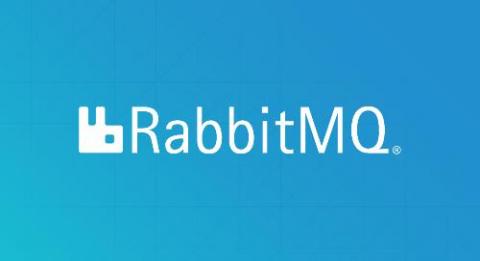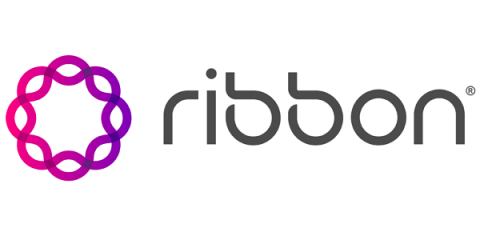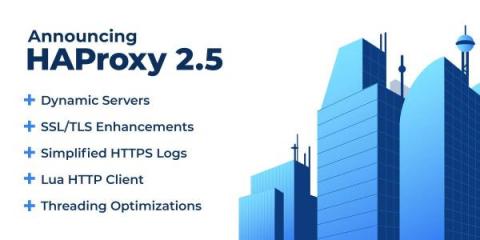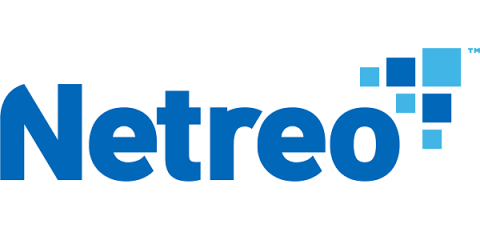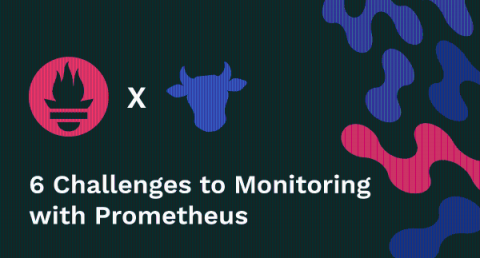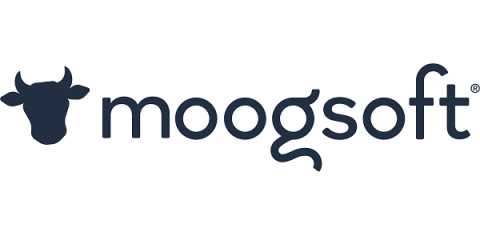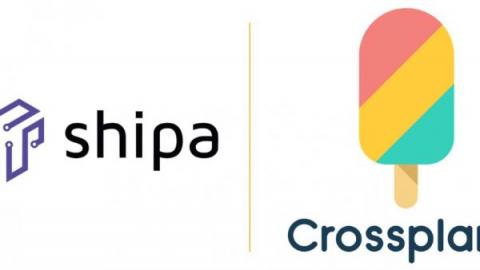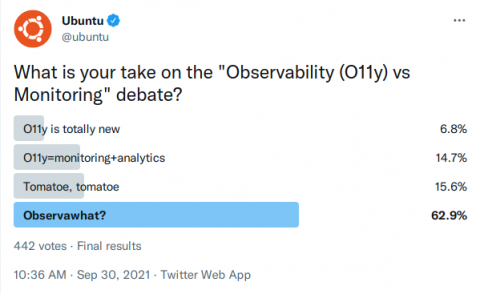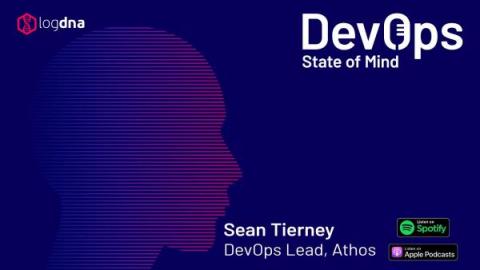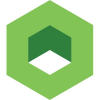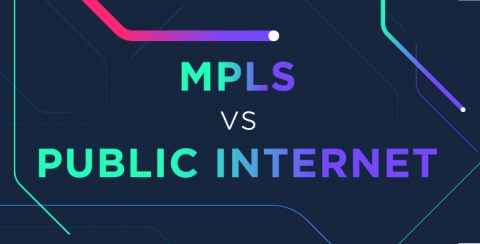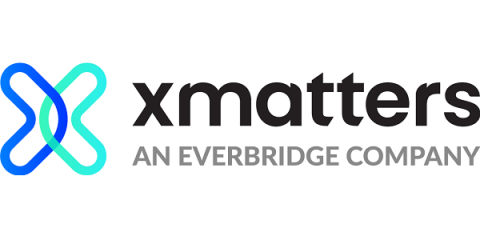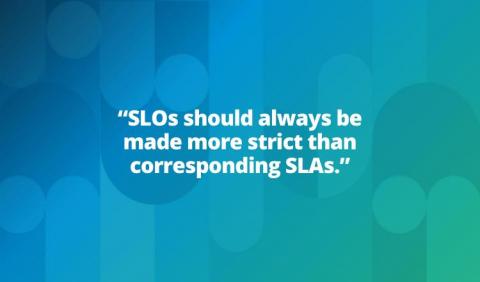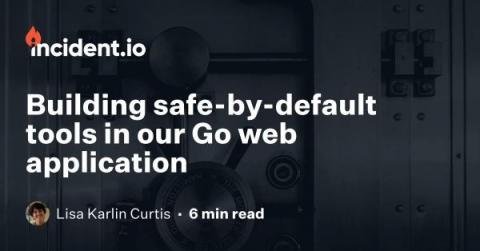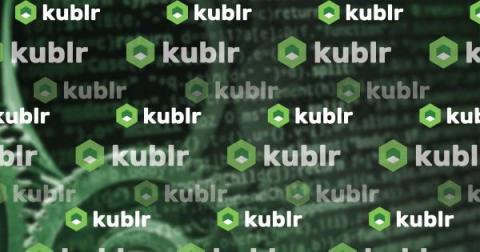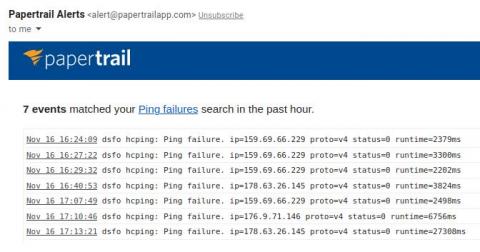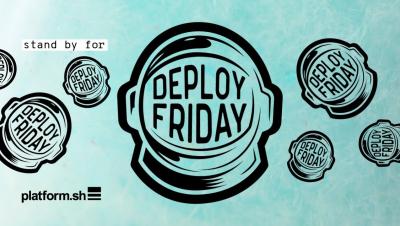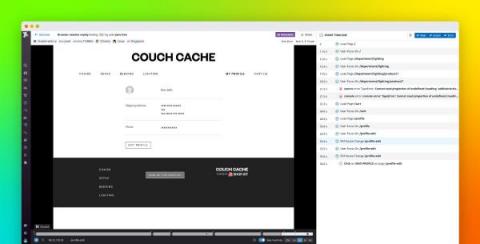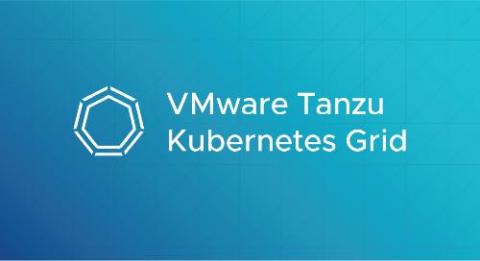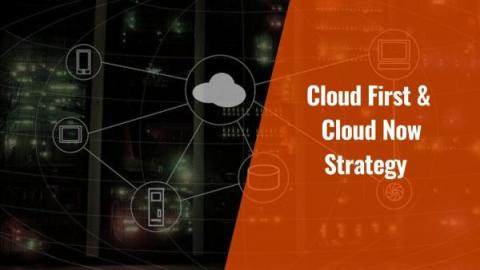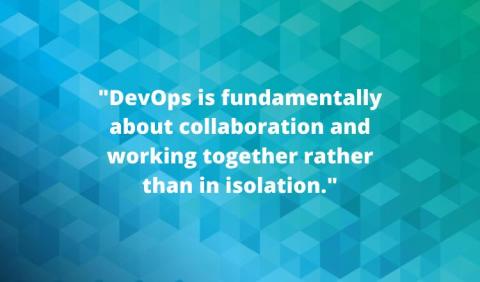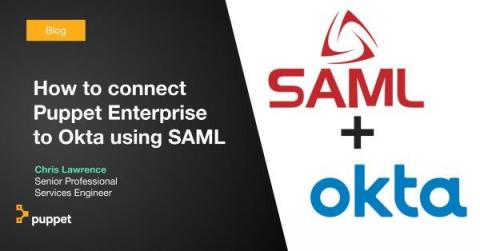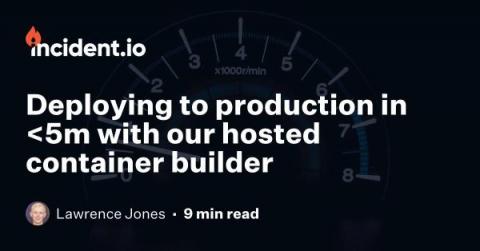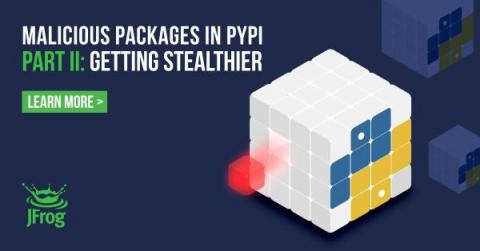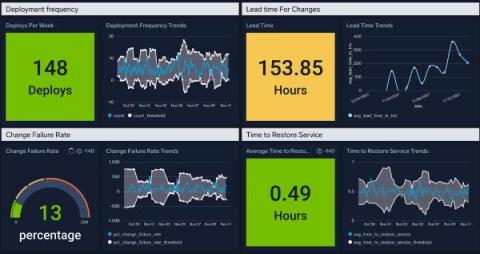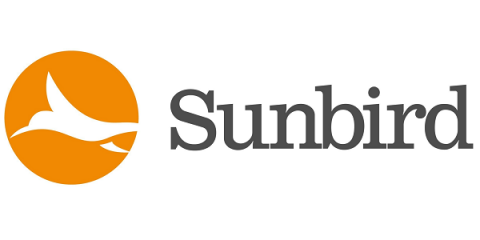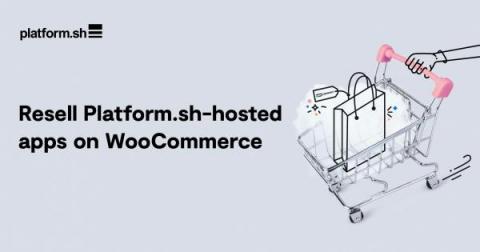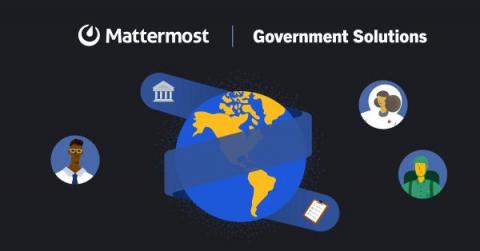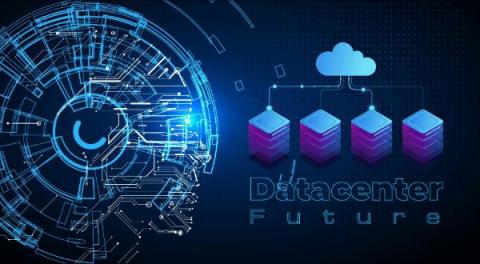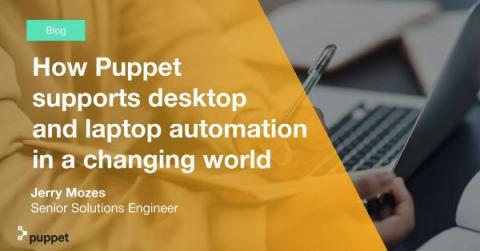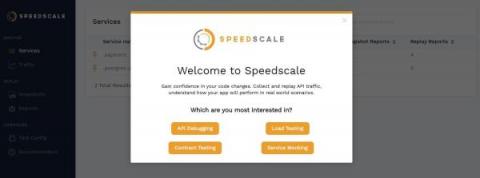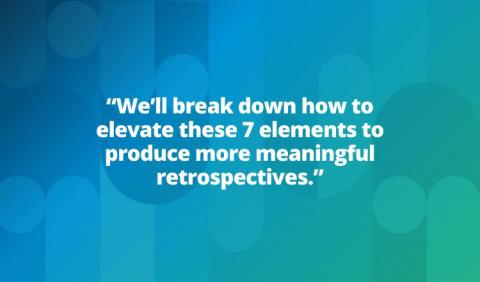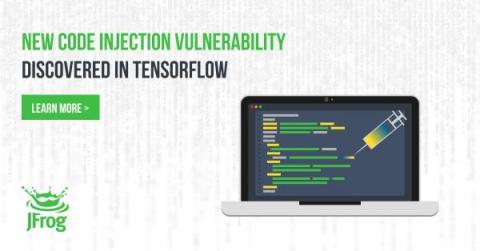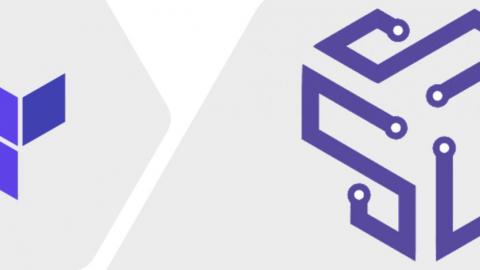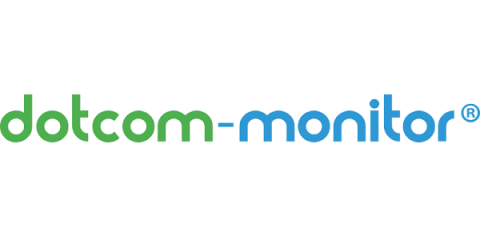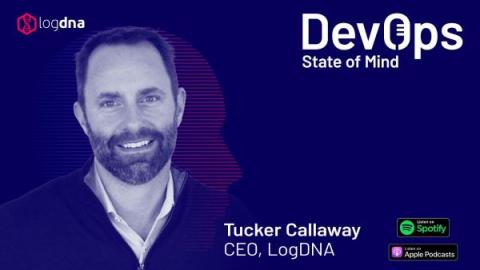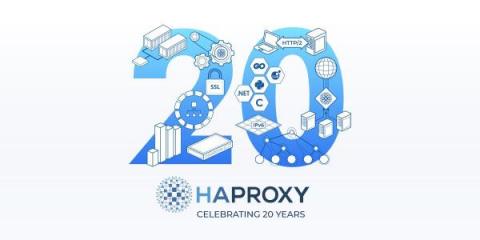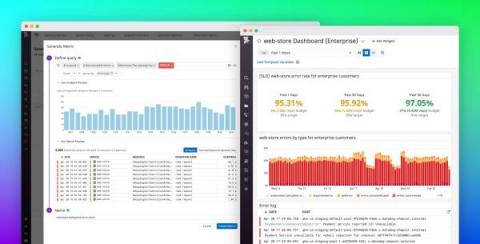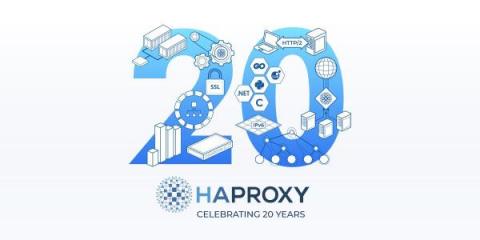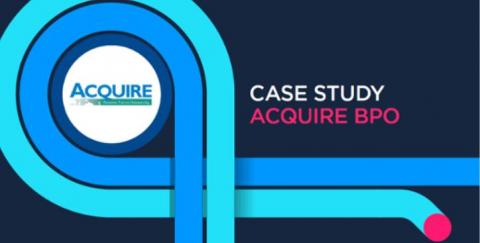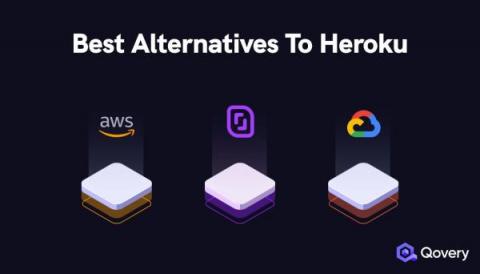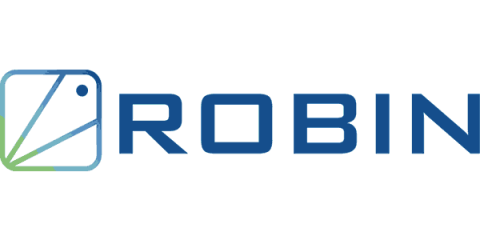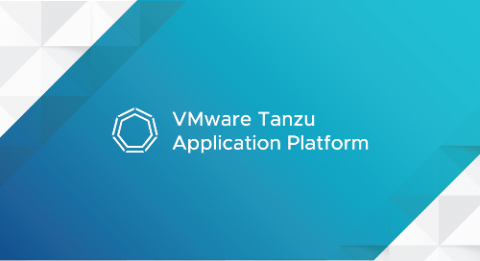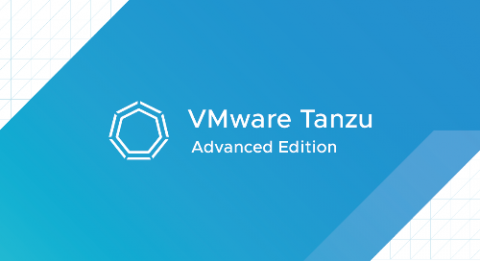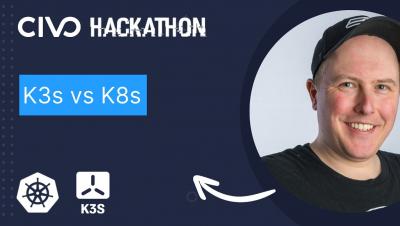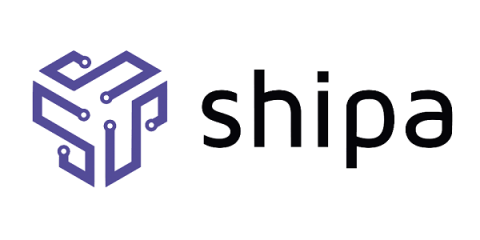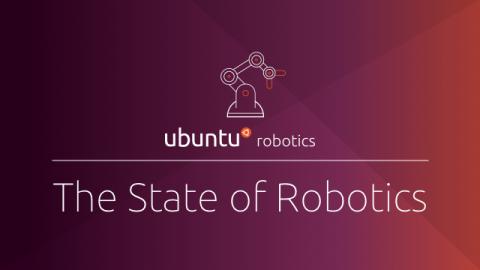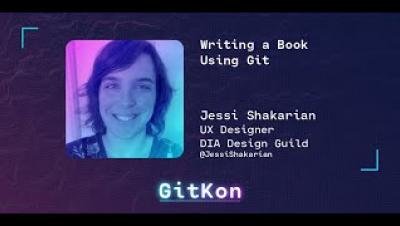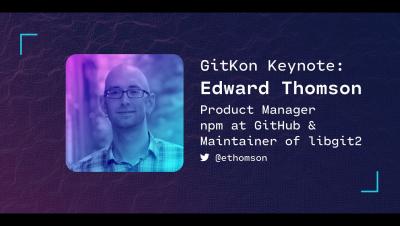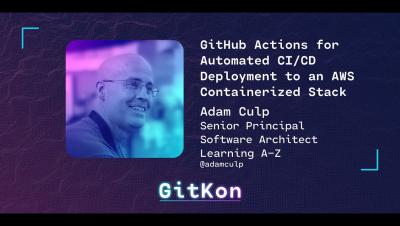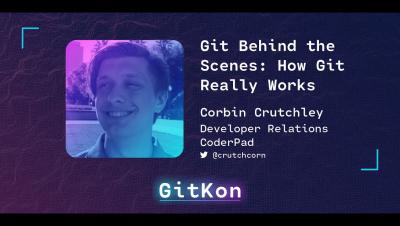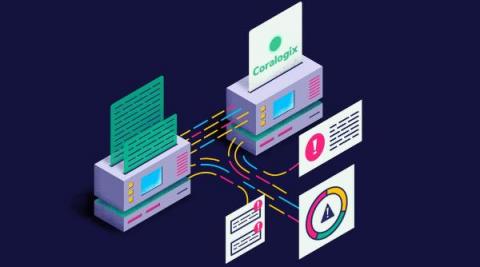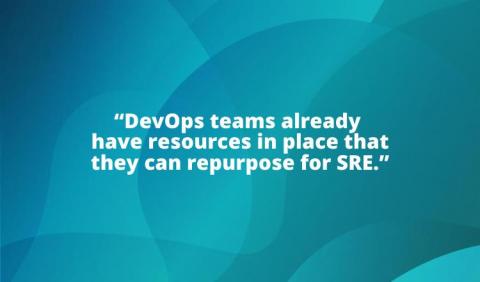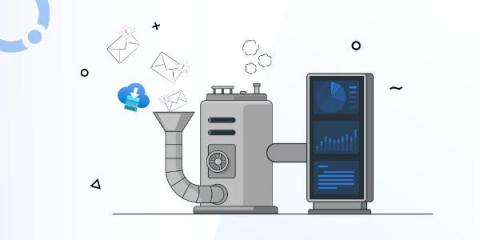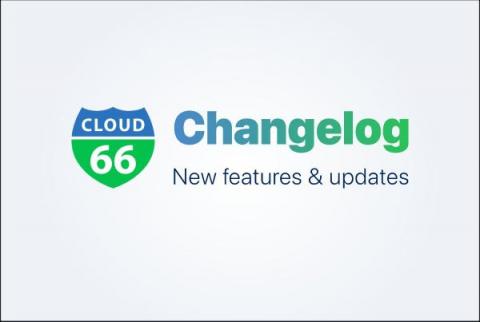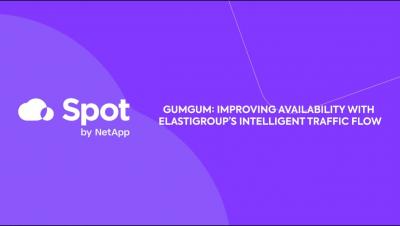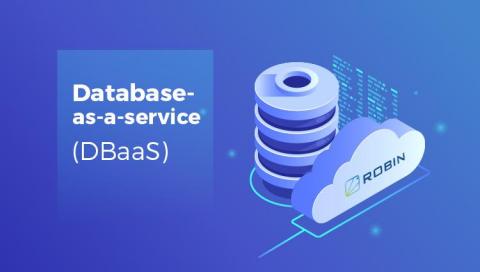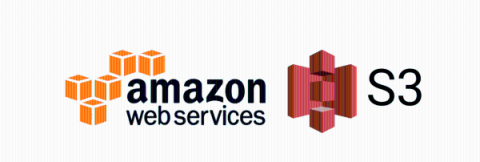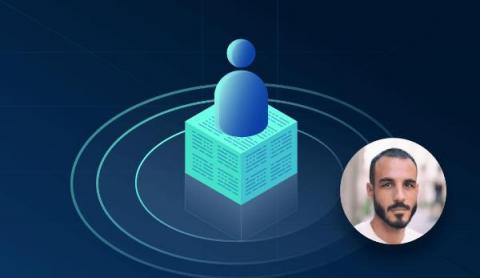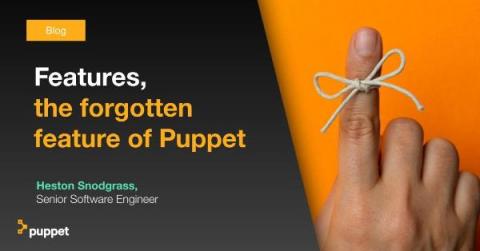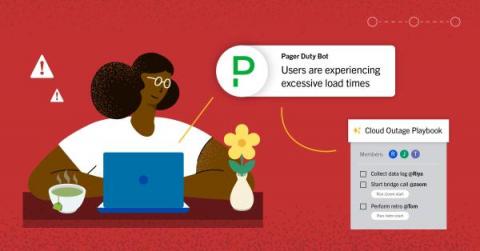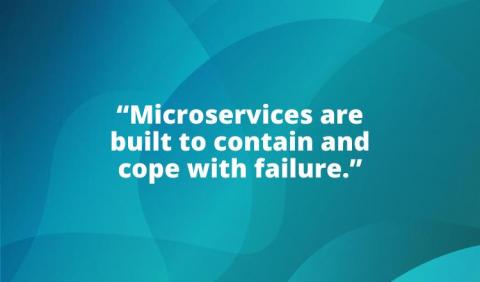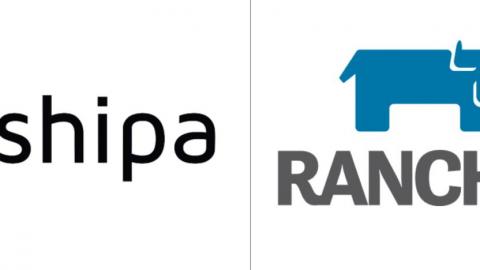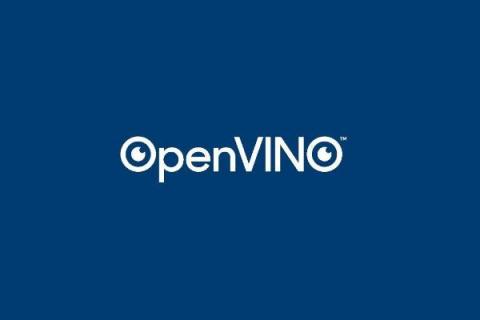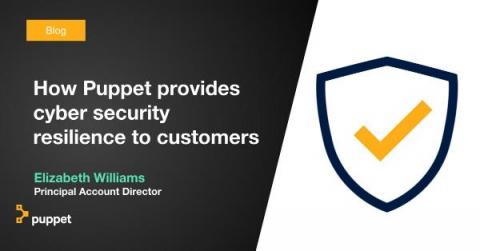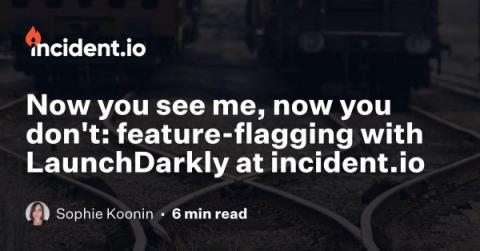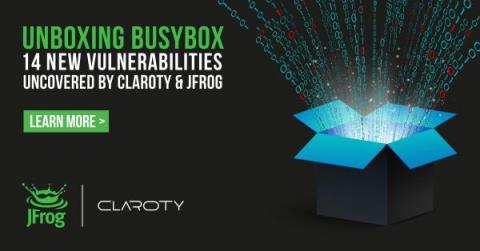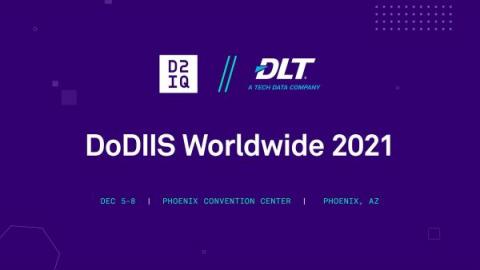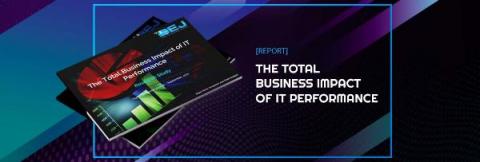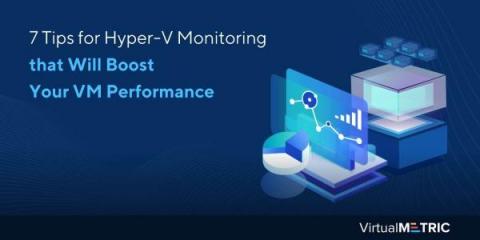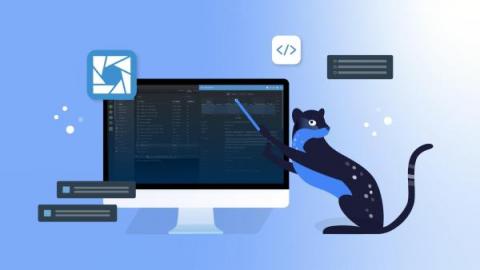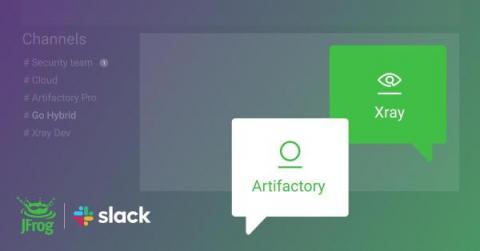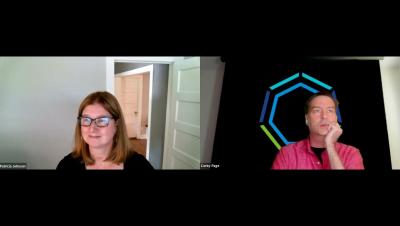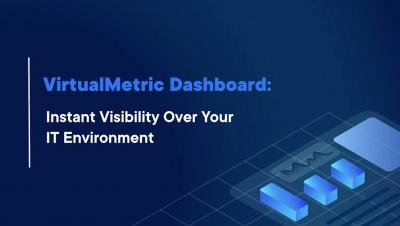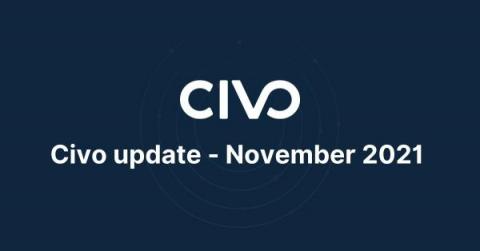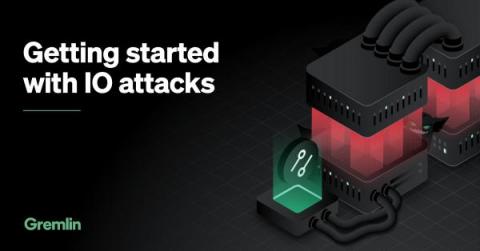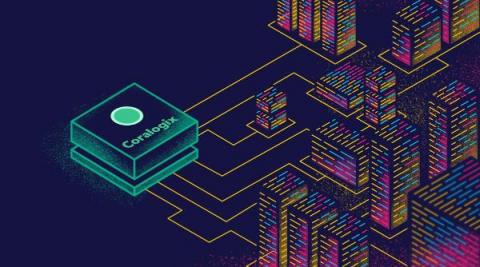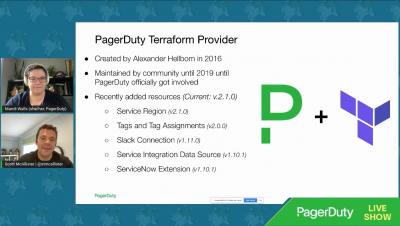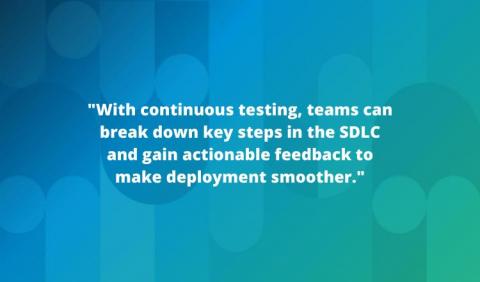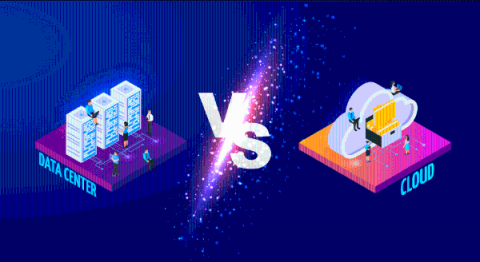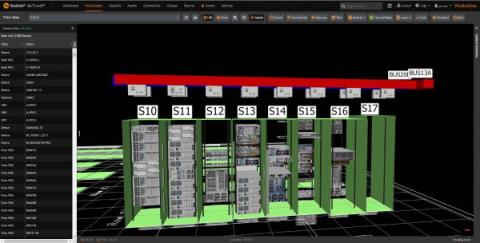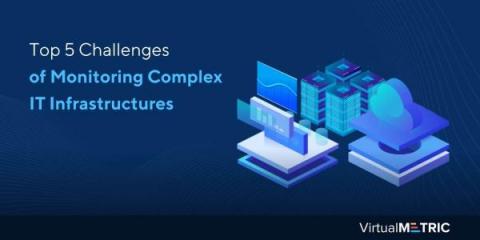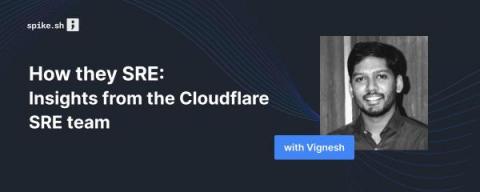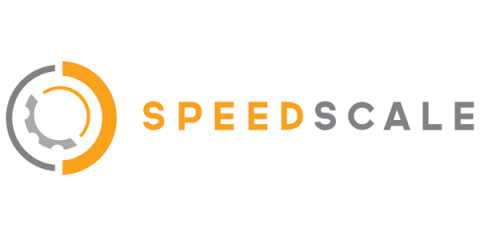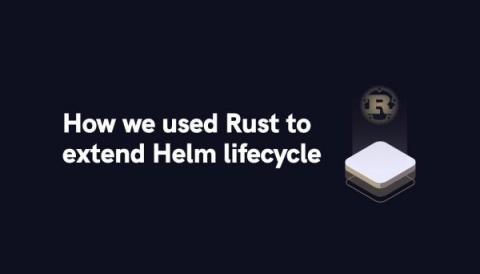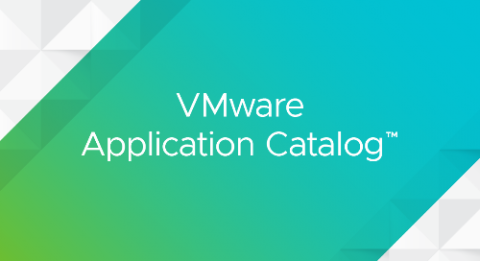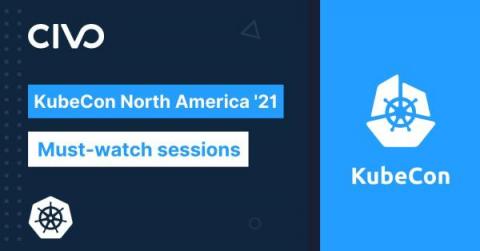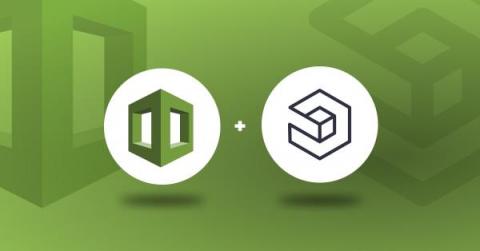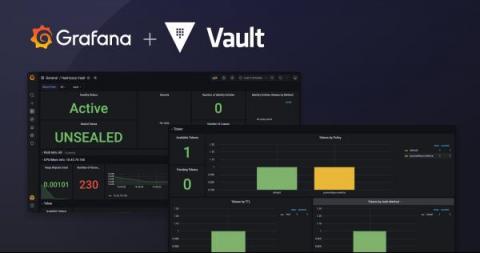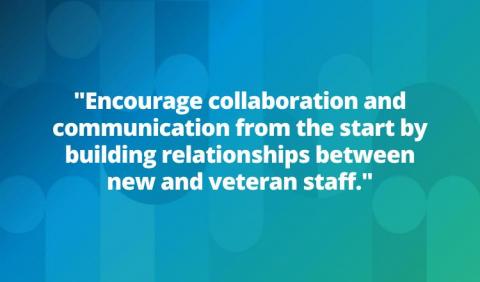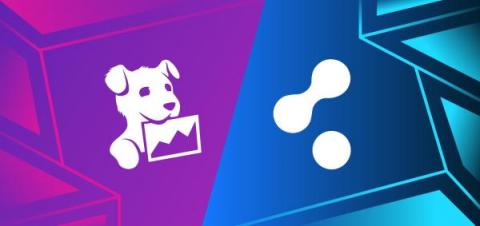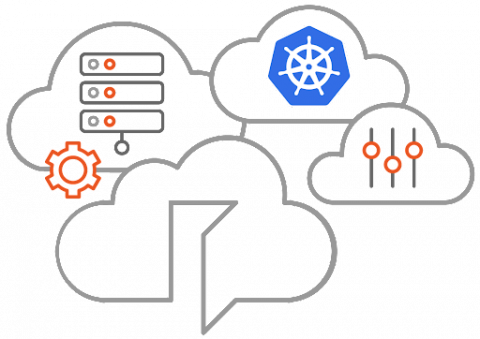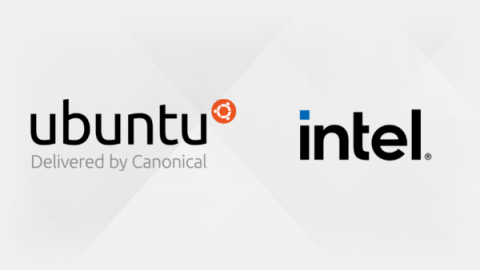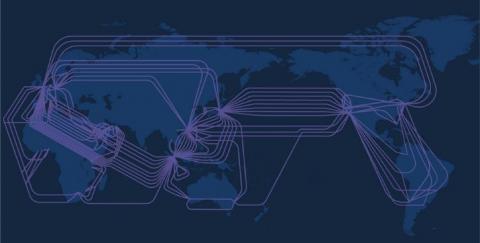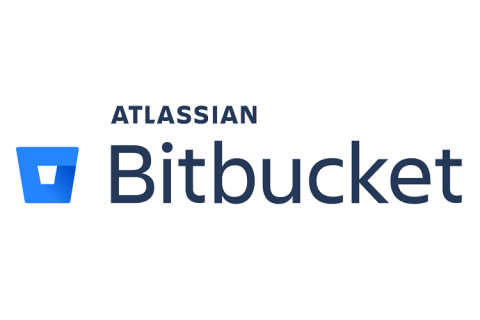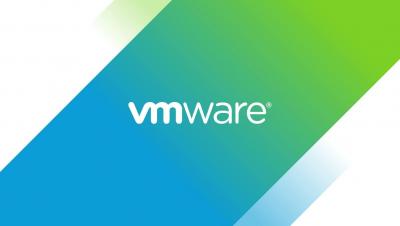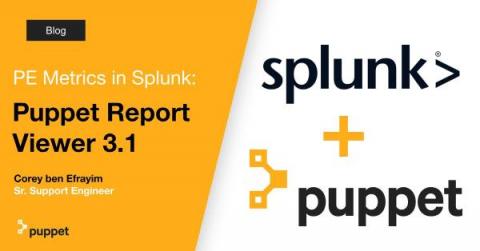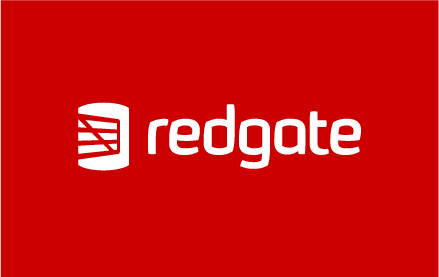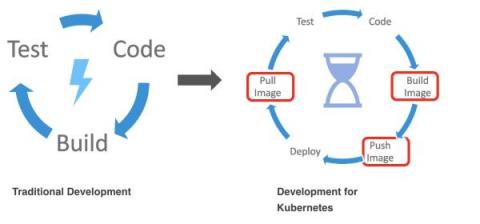Operations | Monitoring | ITSM | DevOps | Cloud
November 2021
CircleCI Achieves AWS Graviton Ready Designation
Continuous integration for .NET applications
.NET is a popular open source, cross-platform development framework for building fast and scalable full-stack applications for the web, desktop, mobile, and the cloud. This flexibility makes.NET a leading platform for developing enterprise web applications and makes.NET development one of the most in-demand skills on the market.
The Gremlin November 2021 release: Integrate better with private network integrations
We’re excited to announce the launch of private network integrations! This lets you use our existing Status Checks and Webhooks features on systems residing inside of your internal network, empowering any Gremlin team to automate Gremlin tasks safely and securely.
VMware Tanzu Service Mesh Enterprise Edition: Securing APIs at Runtime
How to deploy multiple EC2 instances in one go using Terraform
Podcast: Break Things on Purpose | Itiel Shwartz, CTO and Co-founder of Komodor
Welcome back to another iteration of “Build Things on Purpose” where we talk with developers and engineers who are creating tools that help us build more reliable systems. Today Itiel Shwartz, CTO and Co-Founder of Komodor, has joined us to chat about what they’re doing to help tame the chaos of Kubernetes. Itiel talks about Komodor’s goal of making troubleshooting Kubernetes not only easy, but potentially even fun!
How to run Status Checks within your private network using private network integrations
Tanzu Talk: What is the Application Transformer for VMware Tanzu?
JFrog Artifactory for EKS Anywhere Demo
Eight new Puppet Practice Labs to make automation easier with Puppet
Have you heard about the Puppet Practice Labs? Our free, browser-based, hands-on labs cover a variety of topics for getting started with Puppet — everything from installing the primary server to identifying server roles using package data collection, and much, much more. You can read more about them in my previous blog post. We’ve designed Puppet Practice labs to make learning Puppet fun, engaging, and memorable for learners of all levels.
Visibility, Assurance, Analytics Webinar
MTTR | Mean Time to Recovery Explained
New Ideas On How To Install Epinio
Epinio, the application development engine for Kubernetes, is meant to take you from app to URL in one step. It does that by either applying buildpacks to your app or using a pre-built docker image. Epinio installs into any Kubernetes cluster to bring your application from source code to deployment and allow for developers and operators to work better together.
Tanzu Talk: Two Tools to Modernize Legacy Apps - the VMware App Transformer & App Navigator
All-new Netdata Cloud Charts 2.0
Netdata excels in collecting, storing, and organizing metrics in out-of-the-box dashboards for powerful troubleshooting. We are now doubling down on this by transforming data into even more effective visualizations, helping you make the most sense out of all your metrics for increased observability. The new Netdata Charts provide a ton of useful information and we invite you to further explore our new charts from a design and development perspective.
With AWS EKS Anywhere, DevOps with Artifactory Can Be Everywhere
Kublr Completes Microsoft Validation Program for Azure Arc-enabled Kubernetes and Azure Arc-enabled Kubernetes for Data Services
Enterprises choose Kublr because our platform is designed to be highly flexible and seamlessly integrate with cloud and services players for easy management of customized Kubernetes stacks.
Observability and SaaS Providers
SaaS is exploding and so it should; it takes commoditized work and infrastructure away from tech teams so that they can focus on differentiating features. But what happens when it goes wrong? How do SaaS platforms make sure they aren't letting their customers down and in turn, letting their customers down? Observability, bolstered with AI gives all the partners the best chance to optimize availability and customer experience. Here's how.
A Developer focused CI/CD pipeline for Kubernetes
As Kubernetes becomes the key target environment across many organizations, it automatically becomes an essential topic for developers. However, Kubernetes was created for operations and, unless you spend a considerable amount of time learning and specializing yourself, it is still challenging to use. Developers should rather focus on delivering applications instead, and a developer or application-focused platform is needed to enable that.
Data centre networking: what is OVS?
In one of our preceding blogs, we spoke about Software-Defined Networking (SDN) and the key drivers behind it. Virtualisation is one of the fundamental aspects that characterises SDN, and has influenced the architecture of network switching in the data centre. OVS (Open vSwitch) is a fundamental component of modern and open data centre SDNs, where it aggregates all the virtual machines at the server hypervisor layer.
Embedded systems: the advent of the Internet of Things - Part II
This is the second part of the two-part blog series covering embedded Linux systems and the challenges brought about by the proliferation of Internet of Things (IoT) devices. In Part I, we surveyed the embedded ecosystem and the role Linux plays within that space. This blog takes you on the next step in the journey, where we explore the most demanding challenges facing manufacturers of tightly embedded IoT devices.
Pulsant -The UK's Edge computing platform
Private 5G and Private LTE For Communication Service Providers
Speedscale Teams Up With OSC Korea To Bring Traffic Replay Technology To Korea
How Can IT Infrastructure Be More Sustainable?
Introduction to Kubernetes
Control the complexities of containers with the Ocean Suite for Kubernetes
In the relatively short window of time that Kubernetes has been around, it’s rapidly matured as a critical technology foundation for the cloud, and now even applications that were previously thought to be unviable for containers are running with Kubernetes. As companies expand their usage of it, the need to operationalize Kubernetes with automation and optimization is critical to maintaining speed, agility and control in the long-term.
Ocean for Apache Spark - Serverless Spark now available in preview on AWS
The cloud native revolution brought by Kubernetes has transformed the way we build and deliver software, but the world of big data has for too long been left on the side of this transformation. Thanks to many contributions from the open source community, Apache Spark integration on top of Kubernetes is now officially generally available with the recent releases this year.
Learn Terraform: Automate and Manage your Infrastructure easily
Virtana Optimize | Cloud Cost Management Solution
How Qovery Community plan works
Since we launched Qovery in January 2020, we offered free hosting ("Community" plan) for every developer. Providing free hosting was the perfect way to get product feedback and iterate with our users without the cost constraint. As our hosting infrastructure costs have drastically grown within the last 18 months, we had to reinvent our free offer. In a nutshell, we will continue to offer free hosting to involved community members only. Keep reading to know more 👇
Managing code signing on CircleCI using the runner
Code signing is an important part of testing and distributing your desktop and mobile applications. It ensures that the end user’s system can verify the legitimacy of your application. Because of the need for security around signed certificates, they are stored locally and not uploaded to the cloud. This constraint could prevent your team from fully automating your CI/CD pipeline.
41+ BI Tools Every SaaS Company Needs To Know About
3 Things to Know About AI/ML in the DevOps Toolchain
At DevWeek Austin, we discussed how AI and ML have come to the DevOps toolchain and are a great fit! Here are the 3 main takeaways.
Cloud Elasticity: What Happens When You Lose Control
In an on-premises environment, you have to pay for the capacity you have regardless of whether you’re using it, and you can’t exceed that capacity without purchasing and provisioning new hardware. In the cloud, however, you have much more flexibility thanks to cloud elasticity, which is the ability to automatically provision or deprovision resources based on workload changes.
Launch Ubuntu Desktop on Google Cloud
This tutorial shows you how to set up a Ubuntu Desktop on Google Cloud. If you need a graphic interface to your virtual desktop on the cloud, this tutorial will teach you how to set up a desktop environment just like what you can get on your own computer. We need four steps to set up a machine.
Canonical Achieves AWS Graviton Ready Designation
29 November 2021: Canonical, Publisher of Ubuntu, announced today that it has achieved the AWS Graviton Ready designation, part of the Amazon Web Services, Inc. (AWS) Service Ready Program. This designation recognizes that Canonical + Ubuntu Server and Anbox Cloud Appliance has demonstrated successful integration with AWS Graviton Service.
CloudHedge Technologies Achieves AWS Migration and Modernization Competency Status
Plano, Texas – 29th November, 2021 – CloudHedge Technologies, Inc, announced today that it has achieved Amazon Web Services (AWS) Migration and Modernization Competency status for AWS Partners. This designation recognizes that CloudHedge’s App Modernization platform—OmniDeq™ powered by R6Ai™— has demonstrated technical proficiency and proven customer success automating and accelerating customer application migration and modernization journeys.
Application Transformer for VMware Tanzu Is Now in Tech Preview
Enterprises worldwide are embracing innovations such as the cloud to solve their digital needs, but many face challenges with workload migration and application modernization. One way organizations can ease their application modernization journeys is to adopt the 5 R’s framework—rehost, replatform, refactor, retain, and retire—allowing them to choose the right migration strategy for their specific environment.
Create a Reusable Text Input With React Hook Form
Sometimes, managing several input fields gets crazy complex. You may need to recreate the same thing for each form and that’s can be really time-consuming. With a reusable Text Input in React, you can create just one input element in just one component and reuse it everywhere in any form. Let’s do this.
Deploy Friday: E82 Enabling conversation - the design and linguistics of API documentation
Do you need a business case to migrate to the cloud? The answer is clear!
Summary The cloud is always innovating. One of the more recent and large breakthroughs has been the advancement and improvements in CPU architectures. Specifically with ARM CPU processors, where we are seeing adoption across all forms of computing, not only cloud, but also laptops with Apple’s M1, and of course in the past decade with mobile phones. The more recent availability in cloud computing therefore is not surprising, given the progress made in all other areas of technology.
Infrastructure as Code: All you need to know
Azure Security Tips & Tricks
Preview Environment in Early Access
This is the most exciting feature we launched since Qovery v2 has been released - the Preview Environment feature!
Kubernetes Master Class GitOps and Fleet Multi Cluster CD with EKS, GKE and AKS
Tanzu Talk: the best kubernetes executive copy and uni-cloud strategy
5 Best Practices for Successful Microservices Implementation
Microservices have significantly altered the architecture of server-side processors. Rather than a single massive monolithic codebase containing all of your application’s business logic, microservices adhere to the distributed systems concept, in which a collection of application components collaborate to meet business goals. You may create a streamlined microservices ecosystem free of superfluous architectural complications by adhering to microservices industry standards.
Announcing support for Windows containers on AWS Fargate
AWS Fargate is a serverless compute engine that allows you to deploy containerized applications with services such as Amazon ECS without needing to manage the underlying virtual machines. Deploying with Fargate removes operational overhead and lowers costs by enabling your infrastructure to dynamically scale to meet demand. We are proud to partner with AWS for its launch of support for AWS Fargate on Windows containers.
VirtualMetric's Heatmaps
ARM vs Intel: What Are They? What is the Difference Between Them?
Most computing devices today are likely to have an Intel processor, or an ARM (Advanced RISC Machine) processor, such as the CPU in your smartphone or tablet. Both chip architectures are optimised for low-power operation in order to provide mobile devices with the long battery life they require. However, they reflect different mindsets from a technical standpoint.
Kubernetes Master Class Security & Observability feat. Tigera
Kubernetes Master Class Managing Cluster Security at Scale
6 Steps SREs Should Take to Prepare for Black Friday and Cyber Monday 2021
Six tips on how Site Reliability Engineers (SREs) can prepare for the reliability challenges of Black Friday and Cyber Monday 2021
Ocean Headroom Explained - Launch pods without delay!
The dynamic nature of cloud native applications is both a blessing and a curse. The ability to use compute, storage, and network resources without managing physical hardware is a real blessing. Your applications can take advantage of the seemingly limitless resources available in the public cloud. Unfortunately, the curse becomes clear when the bill arrives! It is a significant CloudOps challenge to find the balance between providing optimal application performance and minimizing cost.
10 practices that are changing in software today with Alex Williams
How to rename an API Connection thru the Azure Portal
Linux Mint vs Ubuntu: Who will win?
Linux is an open-sourced operating system for computers, smartphones, servers, mainframes, and embedded devices. The main advantage of Linux over other operating systems is that Linux is an open-source operating system, which means that you can view, edit, customize, enhance, and share the code with anyone. The release of Linux garnered a huge community of contributors that created a variety of features and distributions for users at no added cost.
What is embedded Linux? Part I
“Hello everybody out there using minix – I’m doing a (free) operating system (just a hobby, won’t be big and professional like gnu) for 386(486) AT clones. The above is an excerpt from Linus Torvalds’ original announcement of what came to be known worldwide as the Linux operating system (OS), dated August 1991. In hindsight, it is inconceivably modest now that we are in a much better position to appreciate the full revolutionary extent of his post.
Kubernetes 1.23 rc testing with MicroK8s
Today, Kubernetes 1.23 release candidate was made available upstream for testing and experimentation. General availability is planned for December 7th, so now is the time to report back any issues or bugs. Developers, DevOps and open source software enthusiasts can try out the latest features using MicroK8s. MicroK8s is a lightweight, CNCF-certified Kubernetes distribution with a streamlined UX.
Announcing the Release of VMware Tanzu RabbitMQ 1.2
The Tanzu RabbitMQ team is excited to announce the general availability of VMware Tanzu RabbitMQ 1.2. This version contains RabbitMQ 3.9, a milestone core broker release that introduces Streams, a new data structure allowing for replay and higher throughput. In addition to Streams, Tanzu RabbitMQ 1.2 has some exciting new capabilities and improvements.
Moratelindo Expands Capacity in Key Network Sections with Ribbon Optical Solutions
Announcing support for Graviton2-powered AWS Fargate deployments
AWS Fargate is a serverless compute engine that allows you to deploy containerized applications on services like Amazon ECS without needing to provision or manage compute resources. Now, Datadog is proud to be a launch partner with Amazon for their support of AWS Fargate workloads running on Graviton2, Amazon’s proprietary ARM64 processor.
DevOps transformation: Taking edge computing and continuous updates to space
The past two years have been challenging on many fronts for people and businesses alike. As a global community, we have been unable to travel long distances due to various restrictions, but that doesn’t mean we stop reaching for the stars.
Announcing HAProxy 2.5
Register for our live webinar to learn more about this release. HAProxy 2.5 is now available! It adds improvements to a number of areas including better usability around setting variables, more descriptive error reporting and logging, and enhanced HTTP and WebSocket support. The HAProxy Runtime API has expanded its coverage of SSL-related commands and now includes the ability to add and remove CA files and revocation lists on-the-fly.
Top 10 features of how to get the most out of your CI/CD
The State of Robotics - News from October 2021
Find out what's new in the world of robotics with Canonical's roundup of exciting industry stories from the month of October!
More robotics insights at: https://ubuntu.com/robotics
Save 85% in Time Spent on Root Cause Analysis with Topology-based Observability | StackState demo
Time-traveling topology in observability w/ Mark Bakker and Lodewijk Bogaards | The StackPod EP #1
Building for Windows using the MSIX orb
The MSIX orb is the first “Windows-only” orb from CircleCI. When Microsoft approached us with the opportunity to build an orb that would help Windows developers build on our platform, we were enthusiastic. Most of our orbs, and general workload, revolve around Linux and utilize Bash. However, we recognized the deep need to provide good CI/CD solutions for building applications on Windows, and with use of PowerShell growing steadily within Linux, it was time to take the plunge.
7 Cloudability Alternatives For Cloud Cost Management (Updated 2021)
File Server Management: How to and Best Practices
True work revolves around the access and modification of files, and what better way to store and distribute work files than through a file server? The central-access model for storing and managing files brings many benefits to an organization. Most importantly, everyone can access a single, accurate version of any file on the server. Easy as that sounds, this feat is only possible with proper file server management.
Cloud Monitoring Best Practices: 5 to Adopt
An exponential increase in the generation of data led to the rise of the Big Data era. Among other factors, the cost of scaling up businesses to accommodate so much data prompted many businesses to switch to virtual cloud platforms. The cloud can store, organize, and manage all the data and applications for a company in a virtual environment. Monitoring this environment is crucial, because it’s susceptible to cyberthreats, like data breaches.
What Is an AIOps Strategy and How Should You Form One?
IT operations data grows by the year. Some estimates suggest that the average IT operations team watches their operational data volume double or triple every year. The result of this flood is that IT teams are grasping for any method they can find to make sense of all this data. Many teams are landing on AIOps as their solution to parse and categorize all of these events. AIOps isn’t a perfect fit for every organization, but it is a great fit for many.
6 Challenges to Monitoring with Prometheus
If GitHub stars are any indication, Prometheus has been doubling in usage year over year since its inception. While at Moogsoft we love Prometheus as the metrics foundation of our observability platform, there were some challenges to overcome to make it the rock-solid piece of our stack it is today.
Recognizing Burnout, So You Don't Fallout
Burnout from work is proven to have a tangible impact on your physical health and happiness. Learn how to recognize burnout in yourself and your employees, and build a happy developer culture!
DevOps Postmortem Series: 90's Movies "Predicting" Tech Gone Wrong
How well did 90s movies predict how technology should work and anticipate good DevOps practices? Here are some of our favorite movies, and whether we think they got it right or wrong.
Crossplane and Shipa 101 - Your First Crossplane Abstraction
Kubernetes is viewed as one of the great equalizers between development and operations teams. Simply write a manifest and the declarative power of Kubernetes is off to fulfill your desired state. Kubernetes is certainly pluggable and has the ability to be extended / opinions being swapped internally. As any IT organization can tell you, even with Kubernetes there is a lot of integration work, and several parts of the stack such as IaC have been left outside of Kubernetes.
ServiceNow acquires DotWalk to increase speed, agility in upgrading applications
Delivering both constant innovation and consistently great experiences with software offerings is becoming a critical business imperative in the new world of hybrid work. As a result, more companies are transforming to become software companies—creating the need to quickly and continuously upgrade software applications and technology foundations. Easier said than done? Not anymore.
Observability vs. monitoring debate: An irreverent view
In the past few years, the word “observability” has steadily gained traction in the discussions around monitoring, DevOps, and, especially, cloud-native computing. However, there is significant confusion about the overlap or difference between observability and monitoring.
Cloud-optimized Linux kernels - what makes Ubuntu the top OS across the clouds
Ubuntu is the platform of choice for deploying and running workloads on public clouds. No other operating system gives you better performance and consistency of experience across public clouds, including Amazon, Azure, Google, IBM and Oracle. There is a reason behind this exceptional experience. By design, Ubuntu images in public clouds include an optimized Linux kernel for each cloud, giving you the best performance and functionality across all instance types and services.
DevOps State of Mind Podcast Episode 2: Giving People the Power to Participate
Sean Tierney is the DevOps lead at Athos, a company that's building better athletes through smart clothing and AI. Sean reinforces a DevOps state of mind across the organization by building empathy between hardware and software teams and putting the systems in place to allow them to move faster as a single unit.
A Blueprint for Enterprise-Grade Kubernetes Deployments
MPLS Versus Public Internet: A Balancing Act
DBAle 38: That's absurd! Does it even pass as database development?
How We Deploy Product Releases at xMatters
With Halloween behind us and the holiday shopping season fast approaching, engineering and product teams know what that means: code freezes! At xMatters, code freezes are a part of our product release process in anticipation of the busiest — and most important — time of the year for many of our customers. But code freezes are just one piece of the puzzle in how we ensure our customers have the most reliable experiences. The way our product releases are designed is much more than that.
How Sabre is using SRE to lead a successful digital transformation
Editor’s note: Today we hear from Kenny Kon, an SRE Director at Sabre. Kenny shares about how they have been able to successfully adopt Google’s SRE framework by leveraging their partnership with Google Cloud. As a leader in the travel industry, Sabre Corporation is driving innovation in the global travel industry and developing solutions that help airlines, hotels, and travel agencies transform the traveler experience and satisfy the ever-evolving needs of its customers.
Visualizing K8s & OpenShift CPU+Memory Risks to Performance & Cost
Automated testing for NestJS GraphQL projects
NestJS is fast becoming the de facto framework for NodeJS projects. Unlike older frameworks, NestJS was built with TypeScript, which has become commonplace in the JavaScript community. Frameworks like NestJS seem to be preferred by teams that adopt TypeScript. NestJS supports building APIs in REST and GraphQL. The goal of this tutorial is to show how you can add unit and integration tests to a NestJS GraphQL project and automate the testing process with CircleCI.
SLA vs. SLO (Differences Explained)
How we manage CI sensitive data for our Open Source deployment Engine
Making an Open Source Software with sensitive data and dozens of external integrations is a real challenge, here are feedbacks and tradeoffs we've made.
Building safe-by-default tools in our Go web application
At incident.io, we're acutely aware that we handle incredibly sensitive data on behalf of our customers. Moving fast and breaking things is all well and good, but keeping our customer data safe isn't something we can compromise on. We run incident.io as a multi-tenant application, which means we have a single database (and a single application).
What is Kubernetes?
To understand what Kubernetes (K8s) is, you need to understand the technological developments that preceded it. In this article, you will learn what K8s is, how it evolved and why you should care.
Is FinOps All Talk and No Walk?
I am a big proponent of cross-functional alignment, as I remnded our ELT at a recent off-site meeting. There’s a lot of buzz about FinOps bringing financial accountability to cloud spend by eliminating procurement siloes and implementing cross-functional best practices. As the CFO of a SaaS company, I fully support this practice. In fact, Virtana recently made some changes to our cloud infrastructure as part of our own evolution.
The Different Types Of Cloud Deployment And Their Pros And Cons
Cloud computing is the on-demand availability of computer system resources without direct active management by the user. Instead, the delivery of said resources is available over the internet, which has made cloud computing a popular digital service that various industries use to operate and manage work tasks. How cloud computing services are implemented, hosted and accessed by users is called cloud deployment. There are different types of deployments, each with defined advantages for users.
Run your Ubuntu in US Government Clouds
In August 2016, the United States government announced a new federal source-code policy, which mandates that at least 20% of custom source code developed by or for any agency of the federal government must be released as open-source software (OSS). The memo of this policy also states that the Federal Government spends more than $6 billion each year on software through more than 42,000 transactions. Obviously, this is a huge business for all open-source developers.
Galileo Cloud Compass Makes Calculating Cloud Costs EASY
How to Send Email From Cron Jobs
Let’s say you are writing a shell script for a systems housekeeping task. Perhaps the script is uploading backups to a remote server, or it is cleaning up old data, or it is making a measurement and submitting it to a somebody else’s HTTP API. What is the least cumbersome way for the script to contact you in case of problems? Let’s say you want to be contacted via email – how to make it work?
Key Tenets of DX (Digital Transformation)
Create Ocean clusters with eksctl
Deploy Friday: E81 From customer to team member - meet the team that crossed the line
Obfuscate user data with Session Replay default privacy settings
Session Replay enables you to replay in a video-like format how users interact with your website to help you understand behavioral patterns and save time troubleshooting. Visibility into user sessions, however, can risk exposing sensitive data and raise privacy concerns. For example, a user session may include typing in a credit card or social security number into an input field.
Five worthy reads: Desktop as a Service (DaaS)-Goodbye PCs, hello "desktops" in the cloud
Five worthy reads is a regular column on five noteworthy items we’ve discovered while researching trending and timeless topics. This week, we explore the rise of DaaS services across organizations, and the role it could play in the hybrid workplace of tomorrow. When we last wrote about the era of Everything as a service (XaaS), Desktop as a Service (DaaS) was still a relatively niche concept.
History of SRE: Why Google Invented the SRE Role
A history of Site Reliability Engineering from its origins at Google in 2003 to the present.
Ribbon Spotlight: IP WAVE | Nov 18, 2021
Using HTTP Caching: 2022 Guide
It Works for Me!
What Are On-Demand Instances And When Should You Use Them?
VMware Tanzu Compliance Updates Support US Federal Agencies
Kubernetes has become an ever-larger target for workloads across all industries. The public sector, in particular, experiences several hurdles in achieving effective utilization of this relatively new technology. Of particular concern for the public sector in the United States is the Federal Information Processing Standard (FIPS).
Why Cloud First and Cloud Now is The Most Urgent Business Strategy for You?
Without a doubt, cloud technology has saved numerous organizations from disruption. According to a report published by Allied Market Research, In 2019, the global cloud services market was valued at $325,689 million and is expected to reach $1,620,597 million by 2030, registering a CAGR of 15.8%. The pandemic has amplified the growth of the cloud service market.
Monitor Confluent Cloud with Datadog
Confluent Cloud is a fully managed, cloud-hosted streaming data service. Enterprise customers use Confluent Cloud for real-time event streaming within cloud-scale applications. We’re excited to announce a new integration between Datadog and Confluent Cloud, which enables users to get deep visibility into their Confluent Cloud environment with just a few clicks. In this post, we’ll introduce how to set up the integration and start monitoring key metrics from your clusters.
DevOps Benefits & How to Maximize Them for Your Team
How to connect Puppet Enterprise to Okta using SAML
Nowadays, staff in organizations are required to access multiple applications in their infrastructure. This can lead to the user having to manage multiple login credentials and passwords. There are many solutions available that provide a single sign-on (SSO) capability — such as Okta, LDAP, and Active Directory — which is becoming common practice across businesses.
The State of Robotics - News from October 2021
Ubuntu and ROS: a decade of driving robotics innovation
Cloud Resource Optimization Subscription Service
What is AIOps?
AIOps is an approach to managing the exponential growth of IT operations and the complexity of new technology through the application of artificial intelligence (AI). IT infrastructure increasingly relies on complicated deployments, multi-cloud architectures, and huge amounts of data. Traditionally, the tech industry responds to complexity by applying extra brainpower to the problem, bringing in more engineers, developers, and management.
Deploying to production in <5m with our hosted container builder
Fast build times are great, which is why we aim for less than 5m between merging a PR and getting it into production. Not only is waiting on builds a waste of developer time — and an annoying concentration breaker — the speed at which you can deploy new changes has an impact on your shipping velocity. Put simply, you can ship faster and with more confidence when deploying a follow-up fix is a simple, quick change.
Embrace your Updates
Python Malware Imitates Signed PyPI Traffic in Novel Exfiltration Technique
Extend your DevOps analysis to CircleCI and GitLab data
How Leading Data Center Managers Track and Manage Parts
Data center managers often struggle to accurately track and manage their data center parts inventory. Legacy management tools like Excel spreadsheets are commonly used, but they fail to support the complexity and distributed nature of modern data center environments. They are hard to use, difficult to maintain, time-consuming, and error-prone.
Resell Platform.sh-hosted apps on WooCommerce
Many software developers build their product on Platform.sh. You can take several approaches, some of which are very straightforward. For instance, you can become a member of our Agency Partner Program. Or you can take advantage of our White-label offering to deliver a fully functional, fully-featured Platform.sh PaaS, branded with your organization’s logo.
WFA: Visible - Global Summary Dashboard
Best Practices for Cloud Monitoring
Terraform and Shipa - Better Together - Webinar
Accelerating Digital Operations in Government
Mattermost has proudly served government and public sector organizations of all types since we got our start in 2016. We have always embraced our role as the open source collaboration platform that can deliver developers and other technical teams the tools needed to accelerate digital operations through better collaboration, in a secure and self-managed environment. Today we emphasize our commitment to these organizations further with the launch of Mattermost Government Solutions.
What are data centers evolving to?
“Adapt or die (and let others take your share of the cake)” is both an evolutionary law and a business law. Without going any further, today, the rise of new technologies and critical applications have led to a substantial change in data centers.
Tis The Season: Protect Your Availability During The Holidays
Deck the halls! It's time for the annual holiday Code Freeze, that festive time of year when businesses impose a precautionary halt to code changes and Operations should be quiet. But before you kick up your feet, make sure that demand doesn’t lead to availability embarrassments. After all, retail experts suggest that we’re in for another online-heavy holiday shopping season, so businesses need to brace for increased digital traffic...with little tolerance for failure.
The Art of Git
A network admin's guide to network diagram software
For organizations growing larger by the day, network management becomes increasingly complex, and scaling to meet this growth can be a major headache. To battle such complexity without a graphic representation of a network is a tiresome task, which is where network diagram software comes in. Network diagram software allows a network admin to portray the network clearly and legibly through detailed graphics.
Ribbon Significantly Expands Agreement with Westcon-Comstor in Asia Pacific Region
Monitoring Without Limits - Circonus' Series B led by Baird Capital
This is my fifth company as CEO and I’ve really come to enjoy working in B2B enterprise software – the proverbial “picks and shovels” end of our industry. In particular I enjoy innovating in spaces that may not be immediately obvious and typically overlooked in the mad gold rush of today’s frothy venture capital scene.
Mattermost v6.1 is now available
Mattermost v6.1 is generally available today and includes the following new features (see changelog for more details).
How Puppet supports desktop and laptop automation in a changing world
The world has changed since I started out on a help desk in Colorado 25 years ago. In those long ago years, a company’s desktop machines actually lived under the desks of many in the organization (and often doubled as a foot warmer!) and configuration was done machine by machine manually, or maybe even by some script that was created to run at login if we were lucky. If there were laptops in use by the business users, they were a lot less mobile and rarer than in today’s business world...
Podcast: Break Things on Purpose | Tomas Fedor, Head of Infrastructure at Productboard
Tomas Fedor, Head of Infrastructure at Productboard, is here to talk about his personal passions and professional perfections. Tomas takes us through some of his biggest adaptations he had to make when adopting the cloud. He also tackles the complexities of working through his POC process, and how to keep consistencies across various teams. Teams are a central focus for Tomas as well, and his techniques and experiences in growing and leading specific technical teams is insightful.
Play with the Speedscale - no registration required
For the first time, Kubernetes engineering teams interested in learning more about Speedscale will be able to play with the framework without registering, at play.speedscale.com. Engineers can see firsthand how you: While users won’t be able to actively watch replays run, there are a variety of pre-created traffic snapshots, reports and configs to browse. Engineers will be able to experience the ease with which snapshots are generated for fast, scalable test automation.
How to Write Meaningful Retrospectives
Civo hackathon winners announcement
5 ways incidents made me a better engineer
Incidents are a great opportunity to gather both context and skill. They take people out of their day-to-day roles, and force ephemeral teams to solve unexpected and challenging problems. In my career, I've found incidents can be a great accelerator - for both myself and others around me. It was after leading my first incident at GoCardless that I started to feel really comfortable in the codebase and the team.
A Simple Guide to Taming the Beast That Is Kubernetes
TensorFlow Python Code Injection: More eval() Woes
Remote Server Management Guide: What Is It and How It Works
Remote server management is a proven strategy used for increasing the uptime and responsiveness of your IT infrastructure. It manages the performance, health, and utilization of remote servers or back-end systems on various networks. After reading this post, you’ll understand what remote server management is, how it works, and how to implement it.
Terraform and Shipa 101 - Your First Terraform and Shipa Cloud Integration
Leveraging Terraform, which is an infrastructure-as-code platform, is a great match. Using both technologies together is becoming more mature and there have been some great pieces around the art of the possible between the two platforms. Though if you are unfamiliar with both, this guide will get you up and started with both Terraform and Shipa together. In this example will be using Terraform to create all of the necessary Shipa resources to deploy to a Kubernetes cluster.
Government IT Modernization Must Be More than Skin-Deep
SRE Principles: The 7 Fundamental Rules
In one of our previous articles, we discussed what an SRE is, what they do, and some of the common responsibilities that a typical SRE may have, like supporting operations, dealing with trouble tickets and incident response, and general system monitoring and observability. In this article, we will take a deeper dive into the various SRE principles and guidelines that a site reliability engineer practices in their role.
DevOps State of Mind Podcast Episode 1: Trust, tooling, and a no-blame culture with LogDNA
Tucker Callaway is the CEO of LogDNA. He has more than 20 years of experience in enterprise software with an emphasis on developer and DevOps tools. Tucker fosters a DevOps culture at LogDNA by tying technical projects to business outcomes, practicing extreme transparency, and empowering every person in the company to contribute.
HAProxy Celebrates 20th Anniversary in Open Source
Generate span-based metrics to track historical trends in application performance
Tracing has become essential for monitoring today’s increasingly distributed architectures. But complex production applications produce an extremely high volume of traces, which are prohibitively expensive to store and nearly impossible to sift through in time-sensitive situations. Most traditional tracing solutions address these operational challenges by making sampling decisions before a request even begins its path through your system (i.e., head-based sampling).
Willy Tarreau on HAProxy at Its 20-Year Anniversary
Willy Tarreau, the founder of the HAProxy load balancer, 20 years past its initial, open-source release, still guides the project, often submitting code patches and writing long and meticulous replies on the community forum. Over the years, he has been joined by a cast of regular contributors, but also newcomers. This collaboration has kept the project evolving over time. In this interview, Willy describes his views on the success of the project, and how it grew over the years.
Case Study: Acquire BPO
Demystifying the complexity of cloud-native 5G network functions deployment using Robin CNP
Best Heroku Alternatives for 2022
So you’ve just created a new project and want to start distributing it, but you still don’t know how to manage its deployment. Then there’s the monitoring, network request, and a lot of other problems related to modern apps. At the same time, you want to avoid working directly with AWS due to its intricacy.
10 Tips for Pain-free Pull Requests
[Webinar] 5 Things to Consider When Migrating Databases to Kubernetes with Komodor & Ondat
Edging Closer to 5G with Automation
5G use cases and applications require unprecedented mobility, security, low-latency and tighter integration between wireless and mission-critical applications. To enable these expectations, intelligent infrastructure and automation technologies are being increasingly adopted worldwide. This is proving to be the fundamental backbone of successful, competitive business that is thriving to deliver industry 4.0 and 5G applications worldwide.
Understanding AWS EC2 Billing: Ways To Optimize Your Costs
Managing the Complex Networks of Financial Services
Enhance Developer Experience, Productivity with Tanzu Application Platform for Application Deployment
At VMware’s annual SpringOne developer conference in September, we announced the first customer beta of VMware Tanzu Application Platform. Tanzu Application Platform delivers a pre-paved path to production and a streamlined, end-to-end developer experience on any compliant public cloud or on-premises Kubernetes cluster.
VMware Tanzu Advanced Quarterly Update: Driving DevOps Metrics that Matter
It is imperative for DevOps success that operations teams provide a good developer experience and that developers have what they need for productive workflows. When this is done automatically and seamlessly, teams can get code to production faster. However, it’s not enough to get code committed quickly. That code must also be compliant and secure. Developers should not find out at the last minute that they used a noncompliant package leading to hours of re-work.
New Platform.sh overview video: a proven, 5-step approach helps explain a complex concept
The question that people who don’t know us constantly ask, “What does Platform.sh do, exactly?” Our new overview video aims to answer just that. We took a five-step approach to ensure our message was both clear and succinct: We hope that this video addresses the question about what Platform.sh does and inspires you to use the same five-step framework when you’re tasked with explaining a difficult concept.
Intro to Kubernetes monitoring - Civo Hackathon
Robin.io wins Automation Solution Award | FutureNet World Awards 2021
Deploy Friday: E80 Sylius - the enterprise open-source e-commerce platform
Minimize the impact of critical incidents with Freshservice On-Call Management
“Service outage! Help!” These words (or their variations), have preceded notable losses of millions and billions of dollars in the 21st century. From large corporations to SMBs, no one is immune to the effects of downtime – whether planned or unplanned. However, the earlier an issue is noticed, the faster it is acted upon and resolved, resulting in little or no customer impact.
Getting Started with Ruby and Cloudsmith
Intro to Civo platform - Civo Hackathon
SRE Complete Resume Writing Guide
Follow these steps to write a great SRE job resume.
Collapsing your model for the sake of product-market fit ft. Grant Miller
Intro to Kubernetes and Containerd - Civo Hackathon
K3s vs K8s - Civo Hackathon
Have You Herd? Episode 6 | Tech Films
Cloud Economics - And The Cloud Cost Metrics You Should Be Tracking
Ask Miss O11y: I Don't Want to Be On Call Anymore. Am I a Monster?
First, I’d like to say that pager duty isn’t something we should treat like chronic pain or diabetes, where you just constantly manage symptoms and tend to flare-ups day and night. Being paged out of hours is as serious as a fucking heart attack. It should be RARE and taken SERIOUSLY. Resources should be mustered, product cycles should be reassigned, until the problem is fixed.
Shipa Cloud Updates
I’m sure most of us have heard this saying before, and if you are in the DevOps space, I’m sure this is a scenario that you deal with daily. Most of us started even before we even had all these nice terms, such as DevOps, SREs, DevSecOps, and so many others, when we were all Sys Admins.
The State of Robotics - October 2021
October went fast, full of news and packed with interesting robotics applications. This month certainly doesn’t need an intro, so we will let the news take all your attention.
What is object storage?
Object storage has by far the most simplistic interface out there, with no need for complicated SCSI drivers, HBA drivers, multipathing tools, or volume managers embedded into your Operating System. All you need to do is point your application at an HTTP endpoint, and use a simple set of verbs to describe what you want to do with a piece of data. Do you want to PUT it somewhere for safekeeping? Do you want to GET it so that you can do some work with that piece of data?
Writing a Book Using Git and Staying Organized on a Project
Velocity Git Metrics with GitKraken
Deploying Fast Static Sites with Jamstack & Headless CMS
GitKon Keynote: Edward Thomson of GitHub npm - Git and its Ecosystem
Repos, Riffs, & Rockstar - Using Git with Dylan Beattie of the Rockstar Programming Language
Exploring DORA Metrics - by Brendan O'Leary from GitLab
Git Continuous Delivery - by Angel Rivera of CircleCI
Driving Jira with Git - by Adam Wride of BigBrassBand
GitHub Actions for Automated CI/CD Deployment with AWS CDK
Building GitLens, a VSCode App - by Eric Amodio
Re-exploring the Git Branching Model for the Classroom - by Roy Vanegas
The Visual Git Road to Technical Leadership
Why are you being such a git about it? - Git Best Practices
Git Behind the Scenes: How Does Git Work
Self-Healing DevOps
Stay Alert! Building the Coralogix-Nagios Connector
Ask any DevOps engineer, and they will tell you about all the alerts they enable so they can stay informed about their code. These alerts are the first line of defense in the fight for Perfect Uptime SLA. With every good solution out there, you can find plenty of methods for alerting and monitoring events in the code. Each method has its own reasons and logic for how it works and why it’s the best option. But what can you do when you need to connect two opposing methodologies? You innovate!
Tanzu Talk: Kubernetes is not for developers...?
Infrastructure as Code, part 3: automate Kubernetes deployments with CI/CD and Terraform
This series shows you how to get started with infrastructure as code (IaC). The goal is to help developers build a strong understanding of IaC through tutorials and code examples. In this post, I will demonstrate how to create continuous integration and deployment (CI/CD) pipelines that automate the Terraform IaC deployments covered in part 1 and part 2 of this series. Here is a quick list of things we will accomplish in this post.
Summary of Bridging the Gap: DevOps to SRE
Overview: See the VMware Tanzu Application Platform DevSecOps Experience
Using Sleuth at Sleuth [Stories from the Trenches]
Advanced Service Bus Dead lettering with BAM
Changelog 11th November 2021
Welcome to the Cloud 66 Changelog. These are the changes that have gone out this month.
Kubernetes and the Enterprise
GumGum Automates and Optimizes Operations in the Cloud
GumGum: Improving Availability with Elastigroup's Intelligent Traffic Flow
Building your Database-as-a-service for MySQL workloads on Robin
Database-as-a-service (DBaaS) is a cloud computing service model that enables DBAs and developers to quickly deploy and manage enterprise-grade databases without the need for setting up physical hardware, installing software and configuring databases for performance.
Avoid frostbite: Stop doing code freezes
As the holiday season aggressively approaches I want to perform a public service announcement for everyone toying with the idea of a code freeze for the holidays: please don't. It’s getting cold outside and the season of peppermint mochas is upon us, which might get you thinking about putting a code freeze in place for the holidays. A Word of warning: instituting a code freeze may have unintended consequences.
Store and retrieve static assets on AWS S3 with NodeJS on FlashDrive
AWS S3 is a cloud storage service that saves data as an object associated with a key. Objects are like files and keys are like filenames. Objects are stored in a bucket. We will be auto-generating our object keys while uploading. In a free tier account, you get 5GB of free cloud storage with AWS S3. Note: This tutorial is made for AWS S3 but works as well with S3 compatible providers like Wasabi.com
Discover VirtualMetric's Dashboard Playlists
Monitor Azure Government with Datadog
Azure Government is a dedicated cloud for public sector organizations that want to leverage Azure’s suite of services in their highly regulated environments. As these organizations migrate their applications to Azure Government, they need to ensure that they can maintain visibility into the status and health of their entire infrastructure.
How to improve your influence as an SRE
New Ocean feature - minimum nodes per Virtual Node Group
Spot by NetApp’s Ocean continually optimizes a Kubernetes cluster’s data plane. When Ocean identifies nodes that aren’t being fully utilized, it simulates various bin packing scenarios. Once a more efficient layout is identified, Ocean reschedules pods, and then gracefully terminates the underutilized nodes. Ocean’s continuous optimization of cluster infrastructure saves your organization money and is better for planet Earth!
Features, the forgotten feature of Puppet
When you write enough Puppet code, you will eventually find yourself in need of a Facter fact or Puppet resource type that doesn’t exist in Puppet itself. Then, if you’re like me, you go to the Puppet Forge and see if someone else has written what you need. Oftentimes, you find what you need, add a new module to your Puppetfile or module metadata, and move on with your life.
Playbooks in Action: Creating Effective, Repeatable Incident Resolution Workflows
While service incidents can be wildly dissimilar, they tend to have one thing in common: a need for quick resolution. Response teams need a robust, repeatable process to follow that ensures fast, mistake-free execution, especially for those 4 AM calls. Having a documented checklist saved where the entire team can access and use it at any time could make the difference between quick resolution or compounding the problem.
Microservice Architecture | What It Is & Why It Matters
Enabling SRE best practices: new contextual traces in Cloud Logging
The need for relevant and contextual telemetry data to support online services has grown in the last decade as businesses undergo digital transformation. These data are typically the difference between proactively remediating application performance issues or costly service downtime. Distributed tracing is a key capability for improving application performance and reliability, as noted in SRE best practices.
4 Recommendations for Optimizing DevOps
The concept and development of DevOps have significantly changed the way IT teams work in the last decade. Small and large teams alike can see the difference when they switch from traditional software development cycles to a DevOps cycle: accelerated innovation, improved collaboration, faster time to market. And the list of benefits continues to grow. To effectively embrace DevOps, however, is not an easy task. Thankfully, there are ways to navigate this challenging journey.
Shipa Now in the SUSE Rancher Partner Marketplace
3 Improvements Finance Teams Can Make To Their FP&A Process
Shipa Now in the SUSE Rancher Partner Marketplace
We are very excited to announce that you can now install Shipa from the SUSE Rancher Marketplace. Installing Shipa On-Prem can now be done with a click-to-install inside of SUSE Rancher. Follow this quick guide to get you up and started with Shipa if you are leveraging SUSE Rancher.
Cloud Infrastructure Without the Headaches
Cloud infrastructures have introduced increasing levels of complexity—you have to manage workloads across on-premises, private, and multiple public cloud environments. This requires you to migrate efficiently, optimize effectively, and stay rightsized on an ongoing basis, all while meeting evolving business requirements. With so many moving parts, it can be a massive challenge with lots of pitfalls that can cost you time and money and even put your business results in jeopardy.
Intel and Canonical to secure containers software supply chain
Intel and Canonical collaborate to build and publish OpenVINO™ container images based on the Ubuntu ecosystem. This work aims to provide trusted, secure, and developer-friendly container images for AI/ML applications in many industries.
How Puppet provides cyber security resilience to customers
You only have to read regular news reports about the multiple outages across household names in banking and financial services, resulting in customers being unable to access their bank accounts, to know that cyber security resilience has never been more important and is on every organization’s radar. The threat of regulatory action, heavy fines, and the potential loss of banking licenses is very real.
Ketch Now in the Civo Cloud Marketplace - Getting Started
Infrastructure as Code, part 2: build Docker images and deploy to Kubernetes with Terraform
This series shows you how to get started with infrastructure as code (IaC). The goal is to help developers build a strong understanding of IaC through tutorials and code examples. In this post, I will demonstrate how to how to create a Docker image for an application, then push that image to Docker Hub. I will also discuss how to create and deploy the Docker image to a Google Kubernetes Engine (GKE) cluster using HashiCorp’s Terraform.
In Studio NMG - Private 5G for CSPs
Cycle Podcast | Episode 9 "Equinix Metal + Cycle.io" Featuring Zachary Smith, Managing Director
Now you see me, now you don't: feature-flagging with LaunchDarkly at incident.io
At incident.io, we ship fast. We're talking multiple times a day, every day (yes, including Fridays). Once I merge a pull request (PR), my changes rocket their way into production without me lifting a finger. 💅 It's when we tackle larger projects that this becomes a bit more complicated. We recently launched Announcement Rules, which let you configure which channels incident announcements are posted in depending on criteria you define.
Unboxing BusyBox - 14 new vulnerabilities uncovered by Claroty and JFrog
Top Three Challenges in Building New Kubernetes Ecosystems: Public Sector Innovation
Worldwide container management revenue will grow strongly from a small base of $465.8 million in 2020, to reach $944 million in 2024, according to a new forecast from Gartner, Inc. Among the various subsegments, public cloud container orchestration and serverless container offerings will experience the most significant growth. The benefit of Kubernetes is that it makes it possible to manage and deploy modern applications with increased speed and efficiency.
Network Management Services: An Intro Guide With Examples
Connectivity is more valuable to today’s businesses than ever. Partly, this is because many business-critical operations are happening online. Employees are connecting using collaborative software. Customers are seeking support and placing orders online. At the same time, suppliers and partners are transmitting data online. All their success depends on network capacity and reliability.
Kubernetes Application-Level API
The Kubernetes API is the front end of the Kubernetes control plane and is how users can interact with their clusters. In essence, it’s the interface used to manage, create, and configure the cluster and the state of objects. Using a standard API, Kubernetes allowed teams to focus on constructs and consume infrastructure across different providers.
What do Top-Performing IT Organizations do Differently Than the Rest of Us?
The whole point of monitoring and managing your IT services is to ensure that they’re able to keep business services available and responsive to customer demands. But how do you actually quantify the return on investment you get from your IT performance management solutions? Digital Enterprise Journal set out to answer that question in its new research study, The Total Business Impact of IT Performance.
The Future of Private Addresses: Goodbye NAT, Hello IPv6
CIS-Harden your Ubuntu in Google Cloud
CIS Benchmarks are best practices for the secure configuration of a target system. The Center for Internet Security, Inc. (CIS®) is the authority backing CIS Benchmarks. Ubuntu Pro is entitled to be CIS compliant and packaged with CIS toolings from Canonical. Let’s SSH into your Ubuntu Pro virtual machine. If you haven’t yet upgrade your Ubuntu LTS to Ubuntu Pro, please follow this tutorial.
Canonical Transforms Linux on Mac
November 9th London, UK: On the heels of Apple’s announcement of a new line of game-changing M1 MacBooks, Canonical is bringing fast and easy Linux to the M1 platform. Multipass, the quickest way to run Linux cross-platform, received an update last week allowing M1 users to run Ubuntu VMs with minimal set-up. Multipass can download and launch a virtual machine image with one command, and developers on M1 can now get running on Linux in as little as 20 seconds.
Cloud Computing; Basic Walk-through
Cloud computing is the on demand delivery of IT solutions. Instead of investing capital in buying, owning, and maintaining physical servers and data centers, cloud computing enable the organizations to access the services such as, computing, storages, and databases, whenever required from the desired cloud providers. Now, let us move ahead and have a look at some of the key benefits of cloud computing.
7 Tips for Hyper-V Monitoring that Will Boost Your VM Performance
Hyper-V is one of the most popular virtualization software, especially for Windows systems and servers. However, no software or tool can be optimized to your advantage without proper monitoring. Now, you’re probably already monitoring your Hyper-V environments, but are you doing it the best way? This post will reveal seven important tips that can help reinforce your efforts to Hyper-V monitoring, especially cluster monitoring, which is a hard task.
Improve Your Automation and Reduce Toil
Infrastructure as Code, part 1: create a Kubernetes cluster with Terraform
This series shows you how to get started with infrastructure as code (IaC). The goal is to help developers build a strong understanding of IaC through tutorials and code examples. Infrastructure as Code (IaC) is an integral part of modern continuous integration pipelines. It is the process of managing and provisioning cloud and IT resources using machine readable definition files.
Overview: See the VMware Tanzu Application Platform DevSecOps Experience
What is Kubernetes Lens?
As a DevOps Engineer, one day you’re performing magic in the terminal, settling clusters, and feeling like a god. On some other days, you feel like a total fraud and scam. Errors and bugs appear from everywhere, you don’t know where to start, and you don’t know where to look. Sadly, days like this come far too often. To be more specific, what often causes these bad days is none other than Kubernetes itself.
Embrace your updates - creating a world of daily software releases without fear!
The Astronomical scope of Private 5G - and how to unlock its massive benefits
As enterprises prepare to deploy Industry 4.0 applications, they are increasingly adopting intelligent infrastructure and newer automation technologies. With aggressive digitalization comes an insatiable appetite for improved performance and new services. Enterprises and customers are adopting the current 5th Generation (5G) mobile network as quickly as it becomes available.
Announcing the JFrog Slack App for Artifactory and Xray Cloud
Serverless Cost Optimization: 4 Ways To Lower Your Costs
A practical Guide to implementing SRE
Deploy Friday: E79 The Long and Winding Road towards security compliance
The HTTP/2 Landscape in 2021
When the internet first came into existence in 1983, its communication channels didn't exist, and it was just operational enough to be used for research purposes. In 1989, Tim Berners-Lee had the idea to develop a system for the internet using TCP/IP protocols. That public project at CERN introduced HTTP, HTML, World Wide Web (WWW), and a client-server as communication mechanisms. In this post, you'll learn how HTTP protocol works and how new versions brought it to where we are now, with the widely used HTTP/2 in 2021.
Azure Thames Valley: A journey into DevOps
VMware Tanzu Advanced: A Day in the Life of Cody the Developer and Alana the Operator
SLA vs. SLO vs. SLI: Understanding the Similarities and Differences
An explanation of the meaning of SLA, SLO and SLI, and how SREs should use each concept to manage reliability.
D2iQ Kubernetes Platform Demo - DKP 2.X
Migrate and Modernize: How to Upgrade Your DevOps as You Move to the Cloud
Tanzu Talk: Machine Learning in Kubernetes with GPUs
The eCommerce Holiday Calendar for DevOps
Seasonal spikes in consumer activity are expected, if not depended on, by online retailers throughout the calendar year. However, as shoppers rush to compete over door-buster deals and order holiday must-haves, web traffic escalates to levels standard resource allocation cannot easily sustain. This spike in traffic can lead to unresponsive checkouts, lost or abandoned carts, and slow-loading pages, ultimately resulting in thousands of dollars in lost revenue.
Five reasons to manage your IoT edge devices
The Internet of Things adoption is growing faster than ever before. As connected devices become more affordable, they find their place in many aspects of our lives. Users worldwide can benefit from a large ecosystem of IoT solutions. However, this rapid growth comes at a cost. Different IoT edge devices have different interfaces, speak different languages and many are not supported soon after manufacturing. Over time, this presents challenges not only to usability, but also to security and privacy.
Meet VirutalMetric Dashboard
Civo update - November 2021
In case you missed the big news, after almost two years in beta and early access phases, Civo is now general availability! Find out what this means for Civo and the future of the platform over at our blog. We've also launched the first-ever Civo Hackathon! This is an initiative to bring together developers, architects, experts, and students from across the globe to develop innovative Kubernetes projects on Civo.
Getting started with IO attacks
Storage devices remain one of the most significant bottlenecks in modern systems. CPU and RAM speed seems to increase exponentially year over year, and although there have been large improvements in IO performance with solid state (SSD) and NVMe drives, moving data to and from persistent storage is still orders of magnitude slower than moving it to and from memory. In scalable cloud applications, this slowness can have a major impact on performance, latency, and the user experience.
How IaC helps integrate Coralogix with Terraform
Infrastructure as Code is an increasingly popular DevOps paradigm. IaC has the ability to abstract away the details of server provisioning. This tutorial will look at how Coralogix can be used with the popular IaC tool Terraform.
CircleCI Insights demo | Inside the dashboard
What's New in the PagerDuty Terraform Provider - PagerDuty Garage (Oct 29, 2021)
Continuous Testing | Tools, Techniques, & Best Practices
The business of a platform organization: A look into ROI and metrics
Using Process Mapping to target your automation efforts
Build Connected Solutions with APIs at Scale
feedback on how we built qovery a cloud deployment platform for growing startups replay 2021 11 04
How to use the Bitbucket Cloud Migration Assistant - Demo Den October 2021
Display your continuous integration build status on Jira
Automating tests and deployments with infrastructure (CI/CD) more productive. Instead of managing multiple tools and manual processes, all they have to do is commit the code to a code repository. Not everyone on a project visits the CI/CD system, but they may need to know when the build process fails or is successful. This is where a proper handshake between CI/CD systems and project management tools such as Jira shines.
Splunk Events and Reporting
Data Center VS Cloud, let the fight begin!
In this blog we have always been eager for fights or competitions of whatever we please. We are like that, like fierce pokemon trainers who want to finally find out who has the greatest capabilities to win. They have praised us for it, they have hated us for it, but it does not matter, the point here is not having fun, but to give the most complete information about the litigants and the battle, so that the user can see closely who they should choose in the future.
Data centre networking: SDDC
This blog post is part of our data centre networking series: In the previous blogs, we covered the architecture and main drivers behind software-defined networking. In this one, we discuss the impact of softwarisation on the other important data centre building blocks, culminating in software-defined data centres (SDDC).
8 Simple Ways to Enhance Your Data Center Busway Deployment
Modern data centers and labs are growing in density and complexity as IT devices require more and more power to racks. As such, many data center and lab managers deploy overhead busways for their reduced installation costs and better flexibility, scalability, reliability, and aesthetics. However, without a software solution to monitor and manage your busways, you likely aren’t getting the full value out of them.
Podcast: Break Things on Purpose | Gustavo Franco, Senior Engineering Manager at VMWare
In this episode Jason is joined by Gustavo Franco, Senior Engineering Manager at VMWare, to chat about chaos in the Gustavo’s early days. Gustavo reflects on Googles early disaster recovery practices, to the contemporary SRE movement.
Top 5 Challenges of Monitoring Complex IT Infrastructures
When monitoring a large IT infrastructure, there are multiple aspects you need to keep under control. Doing things manually and relying on people to ensure the infrastructure reliability can be a wrong decision and mislead you when resolving issues or troubleshooting problems. All these complexities faced while managing a large ecosystem can seem hard to overcome, but in reality, they can be handled.
Install kubernetes easily & for free with the VMware Tanzu Community Edition
Best practices for Cloud Operations in the enterprise
How they SRE: Insights from the Cloudflare SRE team
Cloudflare is a global cloud services provider that is based all over the globe, from San Francisco, US to London, England to Sydney, Australia. Their mission, as stated front and center on their homepage, is to help build a better Internet. While that may read like hyperbole, their numbers are impressive - Cloudflare has over 126,000 paying customers and 95% of Internet Users in the developed world are within 50ms of their network.
Bitbucket Cloud has landed in AWS
EMEA Cable Network Evolution (CIN) Summit
How to Test HTTP/2 APIs
Slowly but surely, HTTP/2 is becoming the favored protocol for transporting data files between clients and servers. While HTTP/1 used to be the only way of loading web applications, it’s now lagging behind, especially on the UX front. Since 2015, HTTP/2 APIs have taken the lead with lightning-fast server responses. In particular, they’re responsible for state changes and server responses without the need for browser reloads.
CI/CD and state management for Flutter apps with MobX
MobX is a scalable library developed to ease the process of state management in frontend applications. In this tutorial, you will learn how to manage the state of your Flutter applications using MobX, and then set up a continuous integration/continuous deployment (CI/CD) pipeline for your application using CircleCI. You can find the sample project developed for this tutorial in this GitHub repository.
How we extended Helm lifecycle with Rust
Helm has some limits, discover how we extended functionnalities with Rust.
Five Kubernetes Deployment Best Practices (Part 2)
In our previous post , we focused on tips for making the transition and migration to Kubernetes a smoother, and less painful process. In this post, we’d like to now provide some tips from the operational trenches for future-proofing your Kubernetes operation, after making the move. Kubernetes, as a software-driven system, has many benefits for engineers and DevOps teams to take advantage of.
Four Best Practices to Migrate to Kubernetes (Part 1)
Kubernetes has evolved into the leading platform to build your microservices systems. Given its increased maturity over the past few years as well as the robust ecosystem which has been built around its technology, Kubernetes has become more production-ready than ever. Nevertheless, it still has its own unique set of challenges. In particular, it brings a lot of complexity into play with its adoption.
Announcing the Evolution of Tanzu Application Catalog to VMware Application Catalog
Today we are announcing the next step in the evolution of VMware Tanzu Application Catalog. Since its initial availability in March 2020, Tanzu Application Catalog has seen notable success due to its unique DevSecOps approach, which caters to the needs of developers, security admins, and IT operators. Tanzu Application Catalog offers a library of prepackaged, validated, production-ready open source container images that can be customized using base OS images of any customer’s choosing.
EDB Announces General Availability of BigAnimal, PostgreSQL Database in the Cloud
KubeCon North America 2021 roundup
KubeCon/CloudNativeCon North America 2021 was a whirlwind of sessions, talks, panels, bonding, and learning. As it was a hybrid event, Civo was represented both in person at a booth that featured Sophia and David from our North American team, as well as virtually through our online booth and talks. Plus, we made an announcement of the General Availability of Civo Kubernetes at the event!
Why the creators of K3ai use Civo Kubernetes
An Introduction to Mattermost's Product Documentation Tech Stack
As I approach my first anniversary at Mattermost as a Senior Technical Writer, it’s fun to look back on what has been an empowering year of daily technical learning. When I joined Mattermost, I was new to many of the processes and tools used by the team: A year in, I’ve now introduced, led, and supported enhancements across all of these areas, and more! I’d like to introduce you to our product documentation tech stack and share some key learnings we’ve adopted.
Introducing Google Cloud Managed Service for Prometheus
Perfect Your Cloud's Deployment with Logz.io & AWS CloudFormation Public Registry
AWS CloudFormation is a service that enables you to create and provision AWS infrastructure deployments predictably and repeatedly. This helps you leverage AWS products such as EC2 instances, Amazon Elastic Block Store, Amazon SNS, Elastic Load Balancing, and Auto Scaling to build highly reliable, highly scalable, cost-effective applications in the cloud – without worrying about creating and configuring the underlying AWS infrastructure.
What is a GameDay?
What are GameDays in the tech industry? Jason Yee from Gremlin explains!
Visit https://gremlin.com/gamedays for more information and resources.
Introducing new integrations to make it easier to monitor Vault with Grafana
HashiCorp Vault is an increasingly popular multi-cloud security tool that allows users to authenticate and access different clouds, systems, and endpoints, and centrally store, access, and deploy secrets. At Grafana Labs, we’re always looking for ways to make it easy for our community to get started monitoring important parts of their systems. So we’re happy to share some new integrations that will help our users get the most out of Grafana + Vault.
DevOps Culture: How to Build a Stronger Team
Fireside Chat Highlights with Steve "The Woz" Wozniak
How DevOps Can Reduce the Runaway Waste and Cost of Autoscaling
Learn How to Simplify Kubernetes Performance Management | Pepperdata
What Is Observability in DevOps? A Practical Guide
Software development firms need to develop and deploy software solutions and changes quickly, safely, and as demanded by the client. DevOps can help! There’s a major subset of DevOps you can’t overlook: observability.
Datadog Cloudsmith Integration
Cloudsmith is happy to announce an integration with Datadog to help our customers monitor their Cloudsmith account. Datadog is an observability service for cloud-scale apps, providing monitoring of servers, databases, tools, and services through a SaaS based data analytics platform. At Cloudsmith we are big fans of Datadog and use it to monitor and visualize how our system is performing across a range of services and tools.
Kubernetes Fully Managed: Overcoming CIOs challenges
Kubernetes is everywhere! In the public and private cloud, and from the enterprise to startups, the majority of IT executives around the world have explored Kubernetes, and how it has evolved the way many organisations are developing and deploying their applications. But what is scary about it, and how can organisations better leverage one of the greatest tools in the field while overcoming the biggest challenges facing CIOs when adopting Kubernetes?
Ubuntu optimised for Intel processors accelerates adoption of IoT innovations
2 November 2021: Canonical published the first Ubuntu images optimised for the next generation of Intel IoT platforms, which address the unique requirements of the intelligent edge across multiple industry verticals. Both companies are dedicated to enabling on Ubuntu the Intel IoT platforms’ specific features such as real-time performance, manageability, security, and functional safety, as well as allowing users to take advantage of their improved CPU and graphics performance.
What is Microsoft Azure Portal and its Benefits?
With the help of its continually growing global network of data centres, Microsoft has developed Azure, a cloud platform for developing, deploying, and managing services and applications from any location. Azure is available now. Azure’s platform as a service (PaaS) approach allows you to add cloud capabilities to your current network, while its infrastructure as a service (IaaS) model allows you to entrust Microsoft with all of your computing and network requirements (IaaS).
Data on Azure -What, When, How?
All You Need To Know About MPLS Networks
Application Modernization With Azure
Announcing the Bitbucket Cloud Migration Assistant
How Tanzu Application Platform Improves the Inner Loop for Developers
Moogsoft and DataDog
PE Metrics in Splunk: Puppet Report Viewer 3.1
A number of improvements have been made to the Puppet Report Viewer add-on for Splunk since it was initially released. The most notable changes added in version 3.1 of the add-on are the tracked metrics, allowing for better troubleshooting of performance issues in your Puppet installation.
Next-gen database cloning deploying soon
The 3 Best Ways To Talk To Your C-Suite About Cloud Costs
More Clouds, More Tools, More Problems
Organizations need tools to manage their infrastructure, which today is expanding beyond the data center to include multiple public clouds. In fact, in a recent survey of hybrid cloud decision makers, we found that the vast majority of respondents (88%) have placed more than one-quarter of their workloads in the public cloud, and 44% indicated that they’re running more than half of their workloads in the public cloud.
Ubuntu Pro-based Microsoft SQL Server Instances available for Azure
1st November 2021: Today, Canonical announced support with Microsoft for Microsoft SQL Server with Ubuntu Pro on Microsoft Azure. Canonical has worked with Microsoft to bring a highly performant and fully supported solution for SQL Server to market, based around the Ubuntu Pro 20.04 LTS operating system.
Securing the Open-Source supply chain with Ubuntu Pro on Google Cloud
It’s official: since the outbreak of the COVID-19 pandemic, cybercrime has increased by 600%. Among these, ransomware attacks are estimated to cost $6 trillion in 2021 alone. And there were nearly 550,000 ransomware attacks per day in 2020. The question is: are your workloads secure enough? In this blog, we will discuss how to make your Open Source workloads more secure in one second.
Recognizing and Removing Friction Points in the Developer Experience on Kubernetes
Kubernetes is a game-changing technological advancement, enabling infrastructure and operations teams to automate application deployment and management at scale. But it has also presented new challenges to developers. As organizations adopt cloud native application paradigms, they face a developer experience crisis due to the complexity of the cloud native ecosystem and a steep learning curve for developing applications for Kubernetes.


